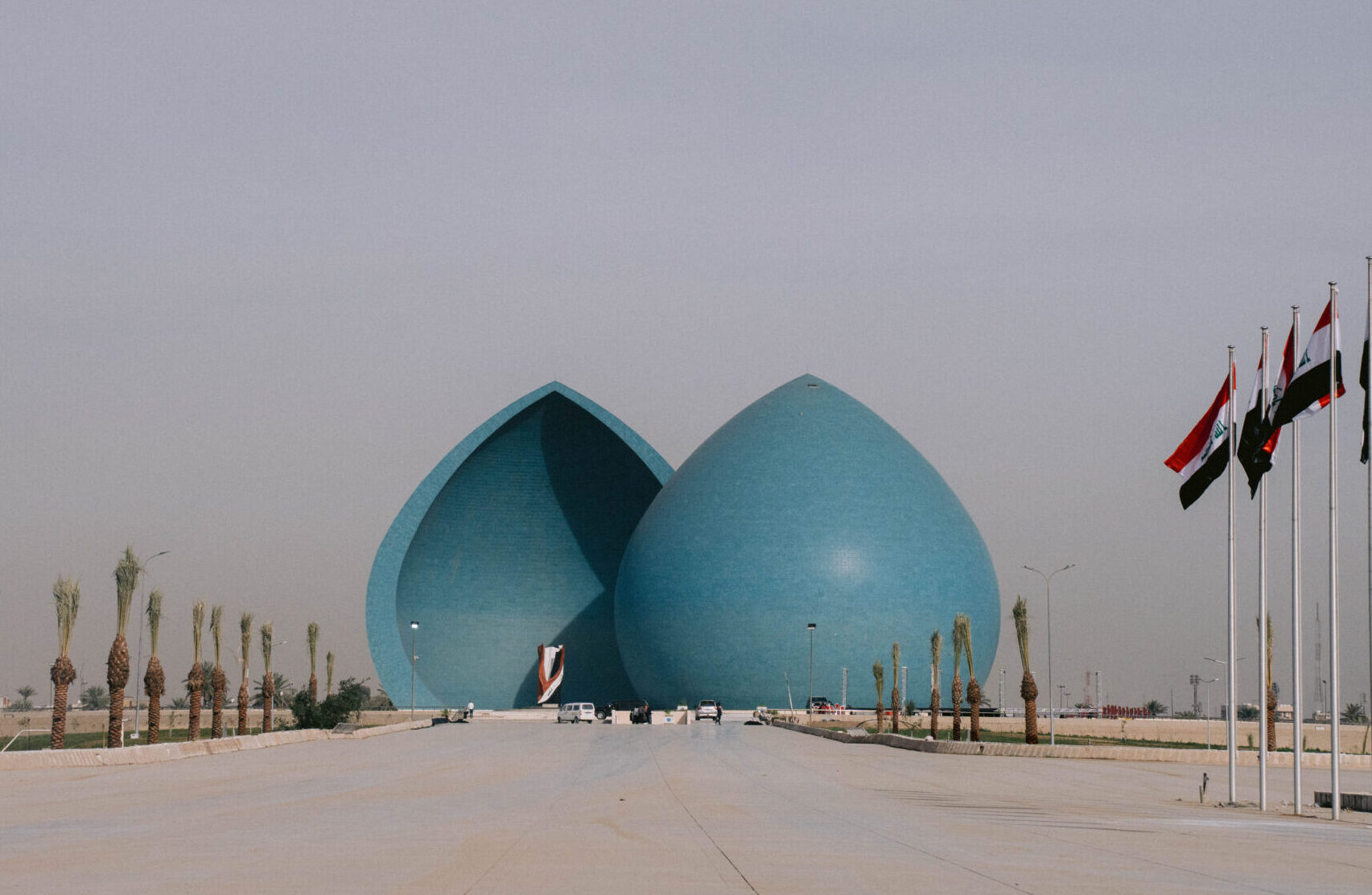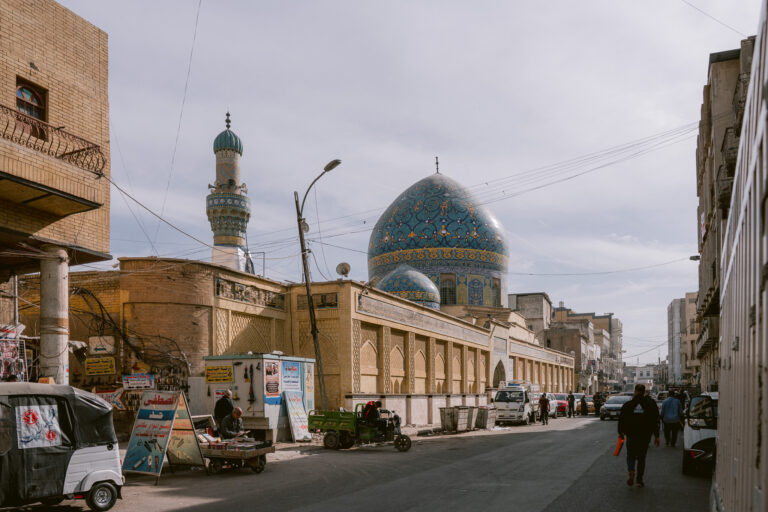Why Visit Iraq? Here’s a 10-Day Itinerary That Will Change How You See the Country
Iraq is probably not on your bucket list. But maybe it should be.
For decades, most headlines about Iraq focused on conflict and chaos. Western media painted such a grim and one-sided picture that few people ever considered it a travel destination.

So, why visit Iraq? As someone who went recently, I can honestly say: there’s never been a better time to go. Iraq’s emerging tourism scene is welcoming intrepid travelers who want to see the real version of the country. Overwhelmingly, these travelers are discovering that Iraq is the underrated travel destination full of rich history, diverse culture, natural beauty—making for an eye-opening and unforgettable travel experience.
🇮🇶 Ready to Explore Iraq the Easy Way?
Here are some trusted tours to get you started:
🕌 Guided 10-Day Iraq Tour with Hotels & Meals
🚐 15-Day Overland Journey from Basra to Baghdad
👳♂️ Baghdad Tour with Local Guide & Private Driver
🏛️ Babylon Ancient City Highlights Walking Tour
Why Visit Iraq Now? 7 Powerful Reasons You’ve Probably Overlooked
I didn’t know what to expect before I went to Iraq. Sure, I’d heard stories from travelers who said they had a great time and met so many kind Iraqis. Still, I’d be lying if I said I wasn’t a little hesitant boarding that flight to Baghdad.
My anxiety, however, vanished the minute I exited Baghdad airport and met my Iraqi guide. He reminded me of a big teddy bear—tall, cuddly (not that I actually cuddled him), with big eyes and a buzz cut. He was soft-spoken and greeted me with a warm smile.
In hindsight, that first impression was a fitting prelude to what was to come: a trip that proved all my preconceived notions about Iraq were damn wrong (in the best possible way!).
Now that I’m back, here are the main reasons to plan a trip to Iraq:
1. It’s the Cradle of Civilization
Iraq is Mesopotamia—the land between two rivers and the birthplace of civilization itself. Writing, agriculture, irrigation, cities… the foundations of modern life began right here. And that’s just scratching the surface.

All those things you might have read about in high school world history? They hit different when you’re standing among the ruins. You can see ancient cuneiform writing on slabs in Iraq, visit the Iraq Museum in Baghdad to learn about the rise and fall of empires, and admire giant artifacts from the Assyrian Empire. For any history lover, this place is mind-blowing.
2. You’ll get ancient wonders you won’t see anywhere else (and all to yourself)
I visited Babylon, Hatra, Samarra, and the Ziggurat of Ur. At nearly every site, I had the place to myself.
Can you imagine walking through 2,000–6,000-year-old ruins without fighting other tourists for photos? You definitely can’t do that in Egypt.
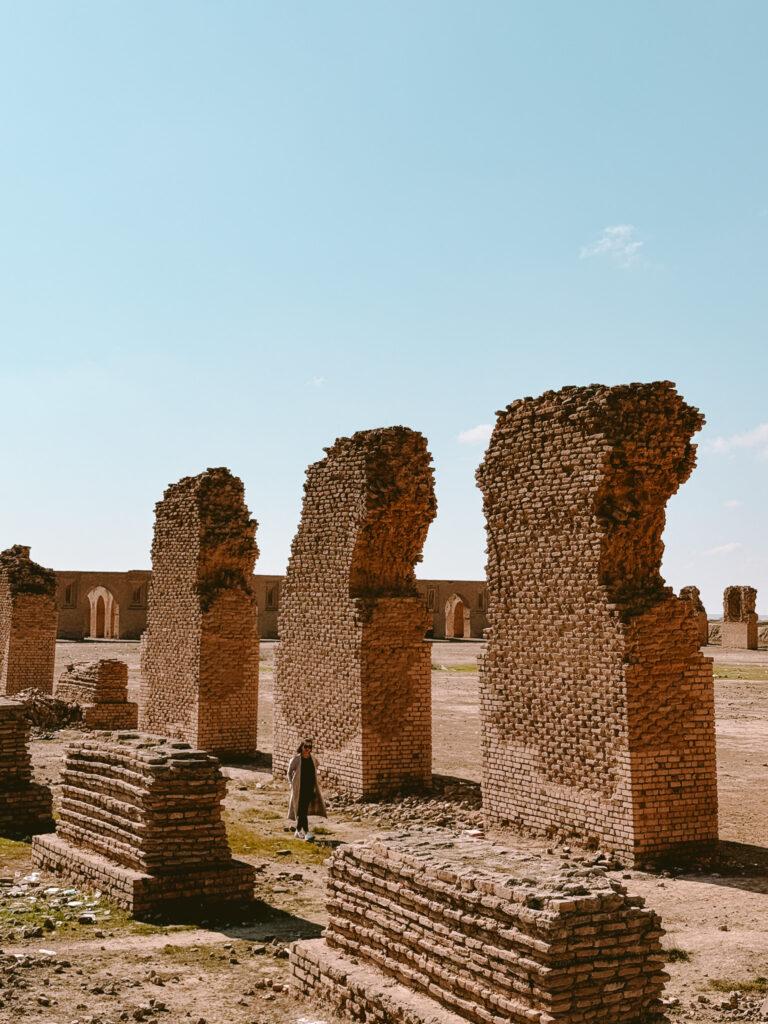
In Iraq, you can take in the ancient ruins all to yourself. There are no pushy souvenir vendors. No guides holding flags with mobs of tourists trailing behind. It’s just you, the ruins, and sweet, sweet silence. Makes it all the easier to reflect on the history here.
3. You can visit real-life biblical destinations
If you’re after a tour of the Old Testament (and even if you’re not), Iraq is full of sites with deep biblical significance.
A few of Iraq’s prominent biblical settings include:
📍The Garden of Eden – Believed by some to be located in Al-Qurna near the confluence of the Tigris and Euphrates Rivers. Others point to the Iraqi Marshes. Either way, it’s in southern Iraq.
📍Ur – The birthplace of Abraham. His house still stands next to the Ziggurat of Ur—a 4,000-year-old stepped pyramid that, if it were in a more touristy country, would be crawling with visitors. Here, you’ll likely have it all to yourself.
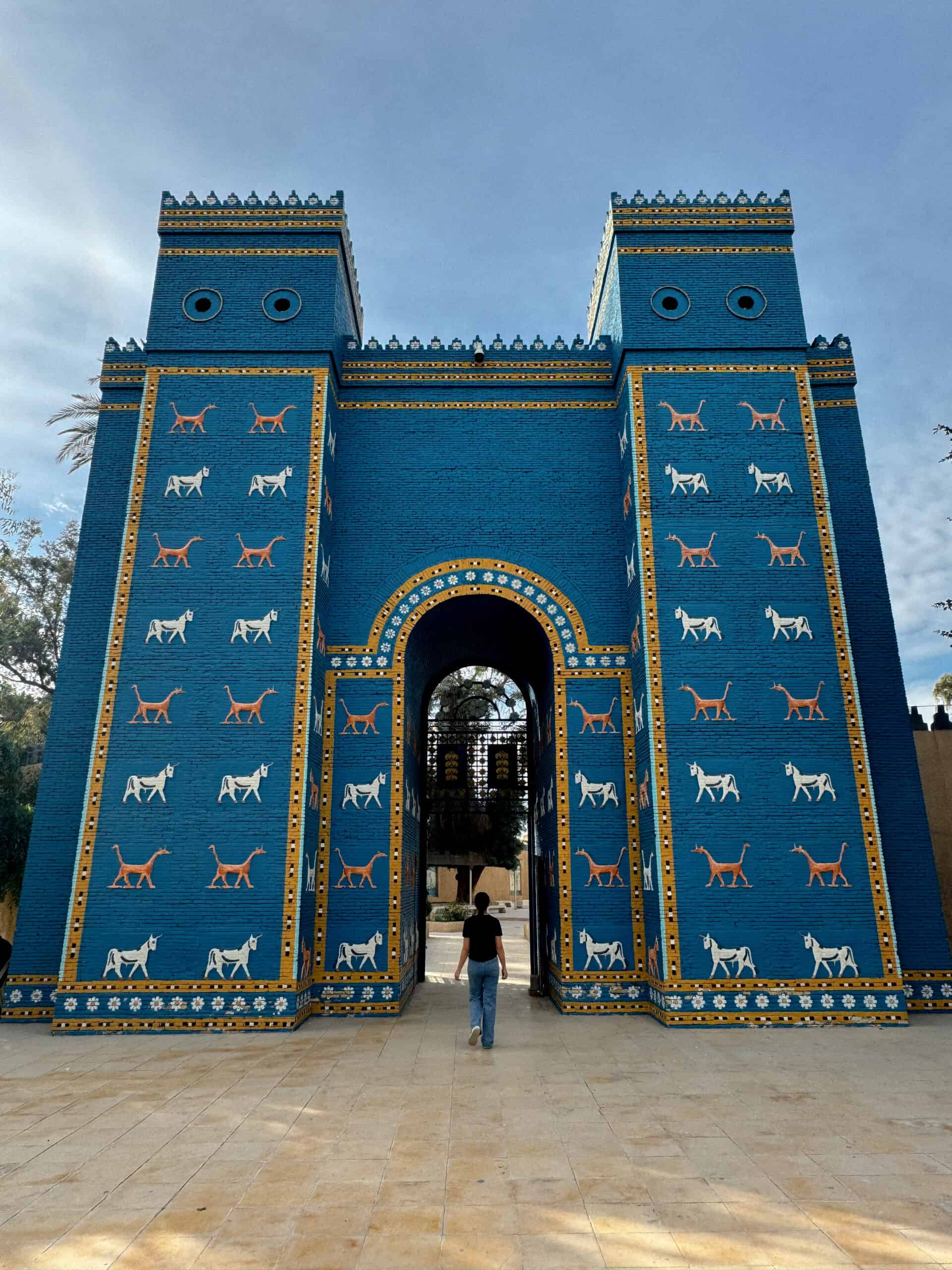
📍Babylon – I always thought Babylon was a myth, but it’s real and you can walk its ruins. You might even try to find the site of the Hanging Gardens (I couldn’t, to my dismay). The site is a patchwork of ancient history, Saddam’s reconstruction projects, and damage from the U.S. military. P.S. Can we agree to stop stationing troops on ancient ruins?
⭐ Bonus: You can also hear Aramaic—the language of Jesus—spoken in Alqosh, a Christian town in Iraqi Kurdistan.
4. It’s economical
If you’re traveling on a budget, Iraq is surprisingly affordable. Mid-range hotels run $50–$100+ per night. Meals at restaurants cost $7–$15. And if you’re really counting coins, you can grab a shawarma for under $1. Oh, and there’s no tipping in Iraq!
5. Locals actually welcome foreigners
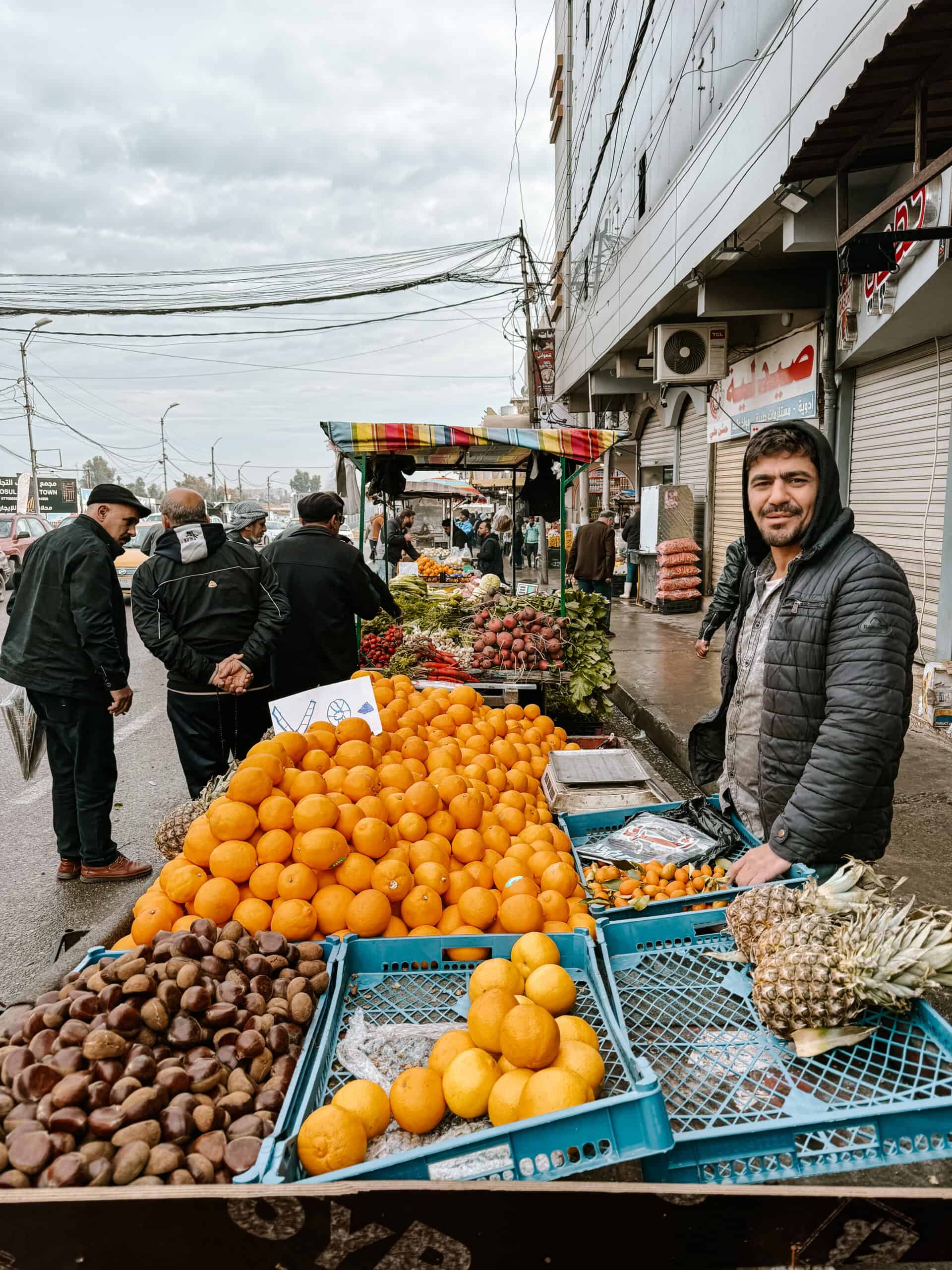
In an age where mass tourism has worn out its welcome in many places, Iraq stands apart. Iraqis are warm, kind, and genuinely curious about visitors—even American ones.
“It’s an honor to take a bullet for a guest.”
– My Iraqi guide, explaining the country’s hospitality culture
It was not unusual at all for locals to approach me welcoming me to their country, asking for photos, sharing tea, or just to chat out of curiosity. They were curious to know why I was there, kind and respectful, and many insisted on treating me to small snacks. In fact, when I fought to pay for my bill, they kept reiterating, “You’re a guest in our country”. Iraqi hospitality is truly in another league.
6. It’s undiscovered still, but there’s so much to see & experience
Talk about bucket list places off the beaten path! Iraq has the potential to become a major tourist hotspot—it just hasn’t happened yet.
The country has:
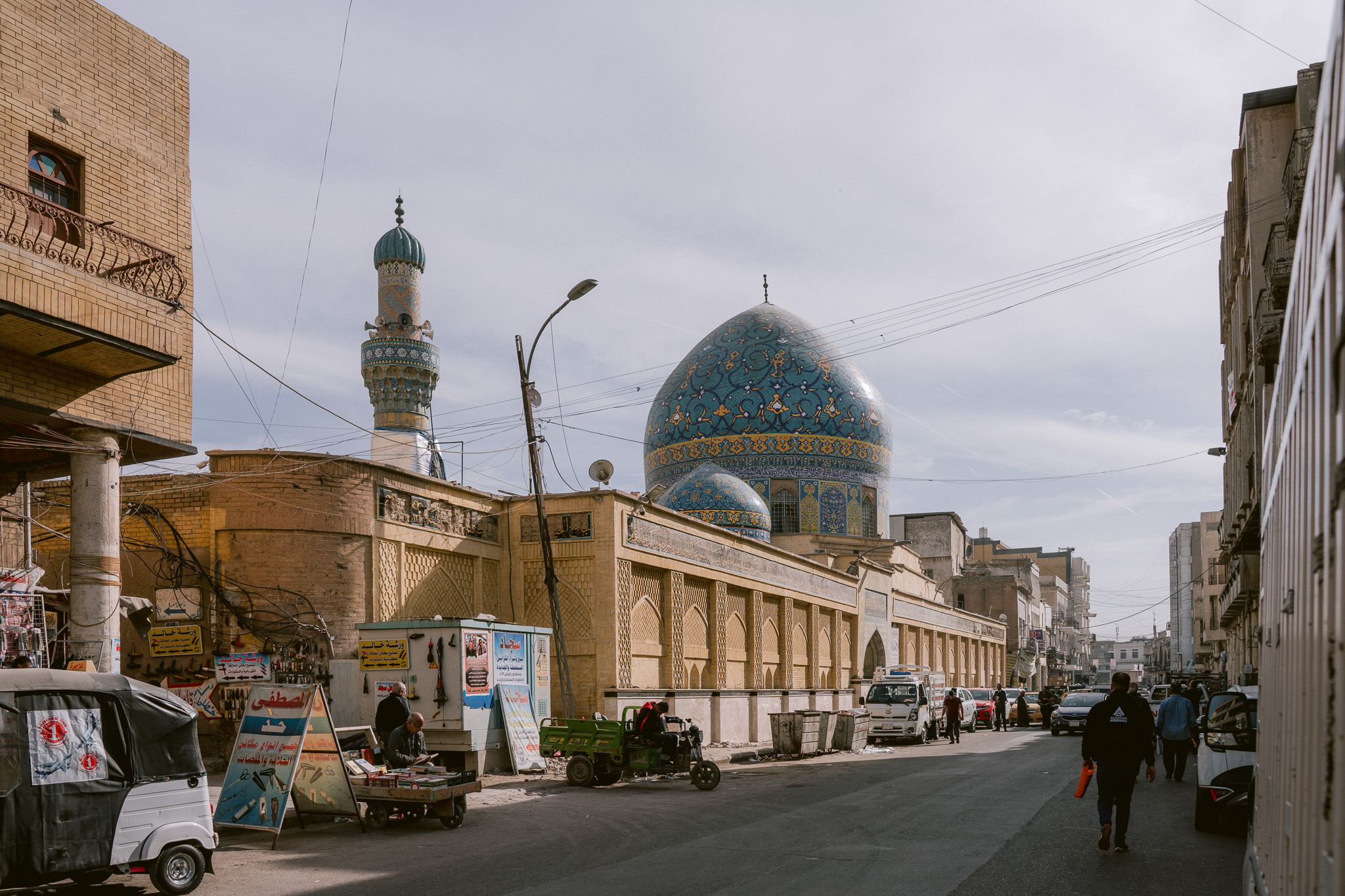
Additionally, since it’s undiscovered, visitors can still experience the raw authenticity there. Vendors aren’t jaded. No tourist prices. Just curious smiles and genuine interactions.
7. It will force you to challenge your assumptions
I learned so much traveling to Iraq—not only about the start of civilization and the significant contributions Iraqis have made to our society (astronomy, astrology, math, how we track time, the wheel, banking, etc.), but also about what life was really like under Saddam and during the Iraq War. I walked away changed.

Traveling to Iraq forced me to rethink the narratives I’d internalized. I realized Iraq is far more than the headlines suggest. It’s beautiful, resilient, hospitable, and criminally underappreciated.
It reminded me why we travel in the first place: to see the world for ourselves.
Is Iraq Safe to Visit? What You Need to Know Before You Go
The first thing on everyone’s mind when I told them I was going to Iraq was, “Is it safe to visit?” I share all the safety tips and travel requirements you need to know in this post: Can You Visit Iraq as a Tourist?
What a Real 10-Day Trip to Iraq Looks Like
Curious what a trip to Iraq actually looks like? Here’s my real 10-day itinerary—complete with tips, surprises, and everything I wish I knew before I went.
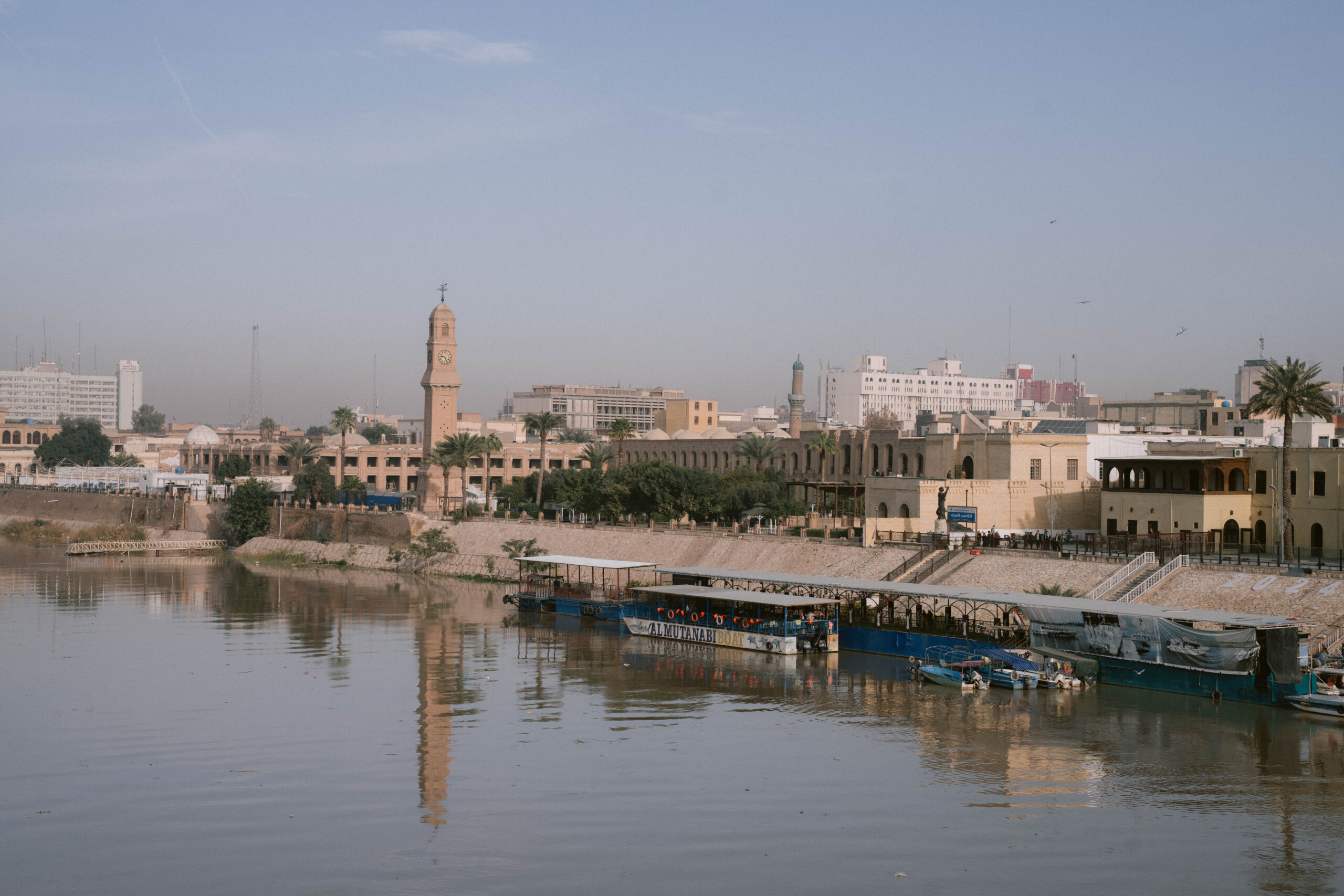
Day 1: Arrival to Baghdad International Airport
Depending on when you arrive, this might be a rest day. I arrived at 10:30pm so it was well after midnight by the time I got to the hotel.
⚠️ Important: There are strict rules around Baghdad International Airport. Generally, only those with a departing flight can enter the premises. Don’t be surprised if your driver can’t meet you inside. In my case, a separate driver picked me up and dropped me at a nearby lot, where my guide met me.
Overnight in Baghdad.
Day 2: Explore Baghdad
Spend the day exploring the capital of Iraq—chaotic, charming, and full of surprises. Don’t rush it. Baghdad rewards slow curiosity.
📍The Abbasid Palace: Overlooking the Tigris, this intricate brick palace is a rare surviving example of Baghdad’s medieval golden age. Tall archways, geometric brickwork, and a peaceful setting. A reminder that Baghdad was once a global center of science, art, and philosophy.
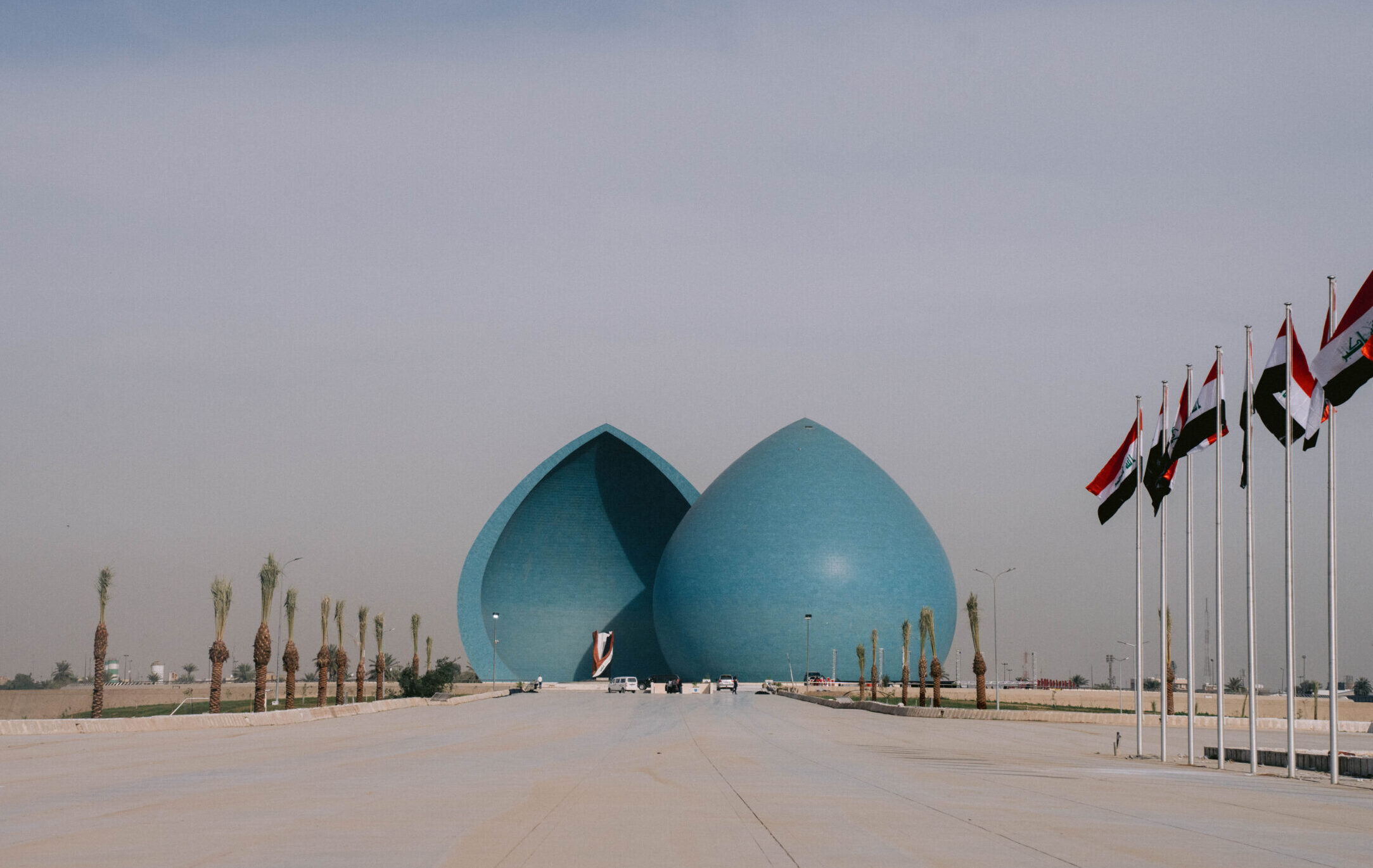
📍Martyr Monument (Al-Shaheed Monument): If there’s one recognizable landmark of Iraq, it’s Martyr Monument. This blue-domed structure was built in the 1980s to honor Iraqi soldiers who died in the Iran-Iraq war. Sadly, it was under renovation when I visited, but usually, you can walk right up to it and explore the museum underneath.
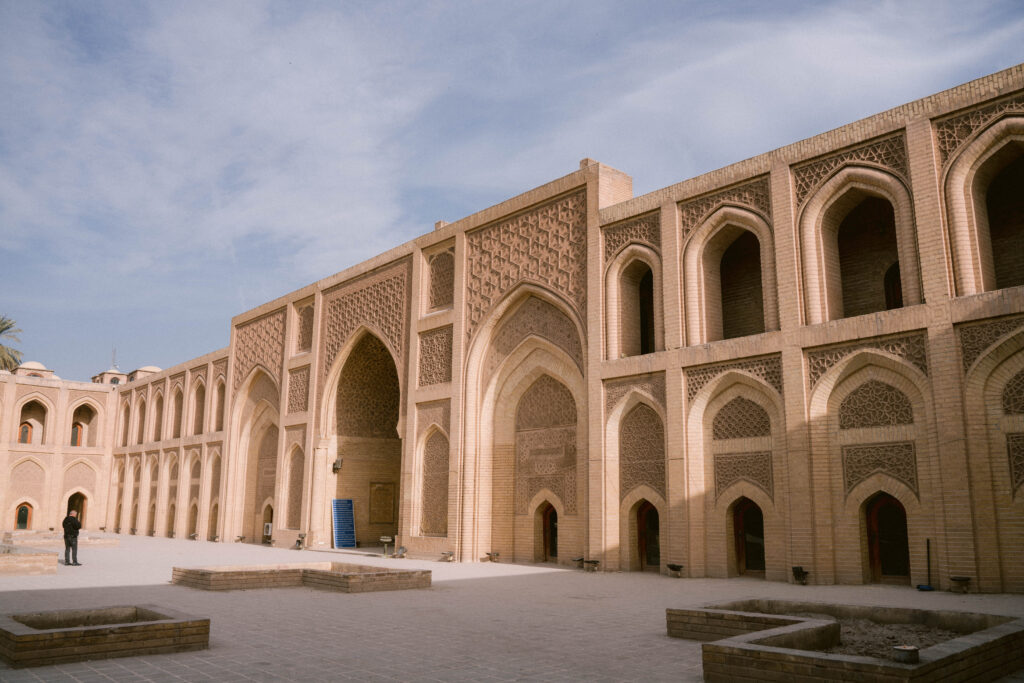
📍Al-Mustansiriya School: This is a beautiful public Islamic university that dates back to 1227 CE and was a major intellectual hub during the Abbasid era. Today, the courtyard still stands—with stunning architecture featured on the back of Iraqi dinars.
📍Mutanabi Street: Mutanabi Street is the hubbub of Baghdad’s literally scene. It’s lined with bookstores, antique shops, and cafes. Walking down it, you can get a sense of the importance of education and literature in Iraqi culture and history.
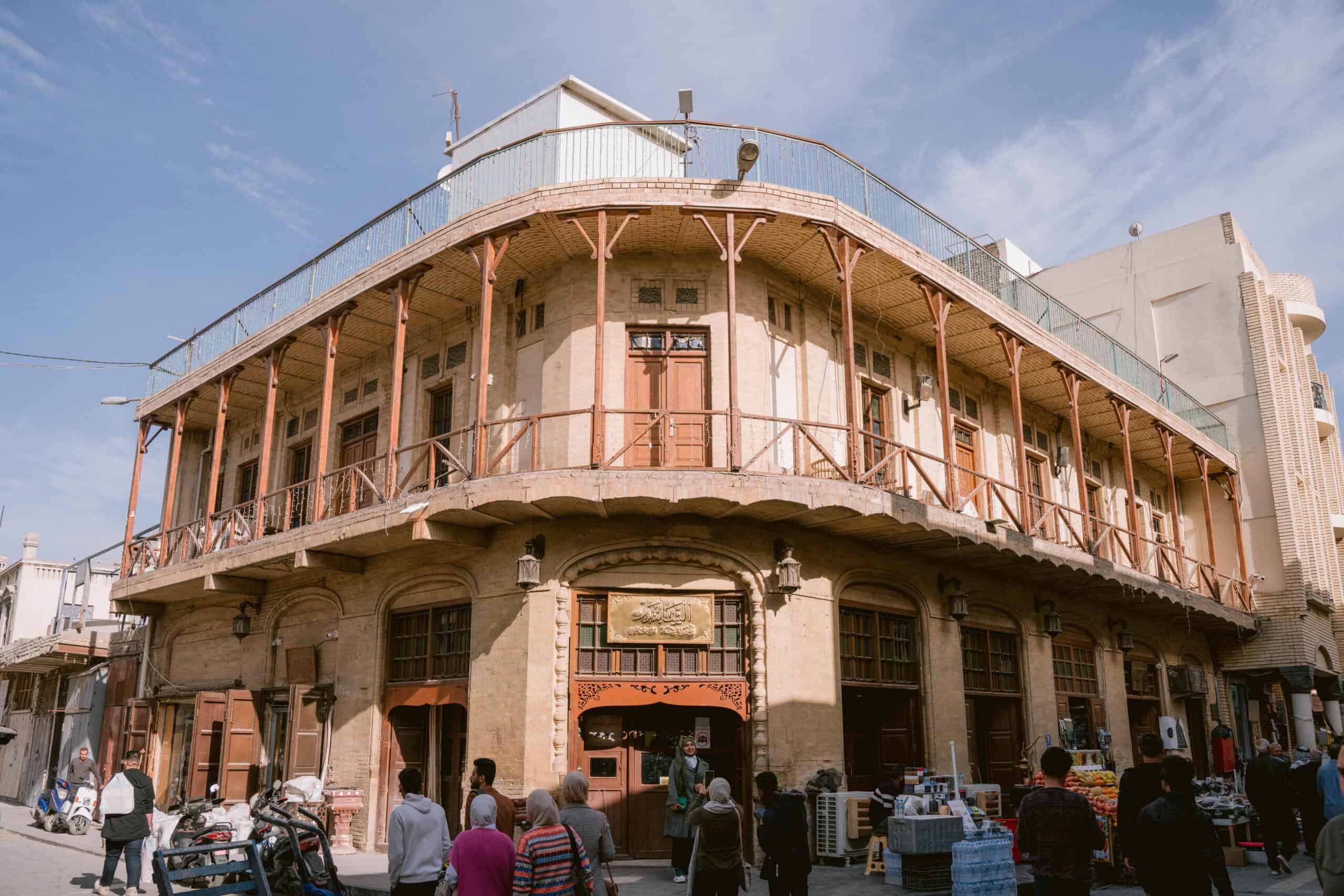
While here, stop at Shabandar Café for some tea. In 2007, a car bomb exploded causing damage to the cafe and killing innocent people as well. Today the cafe is repaired and is thriving, just as it’s been over a century. Walking in feels like you’ve entered a time-capsule where you can imagine all the writers and revolutionaries who have debated politics and philosophy over tea here.
💡 Bonus tip: If you like unique souvenirs, the vendors along Mutanabi Street often sell old bills that still feature Saddam Hussein’s picture. I bought mine from one of the vendors at the end of the street (close to the arched entrance) who had a table full of random knick-knacks and antiques.
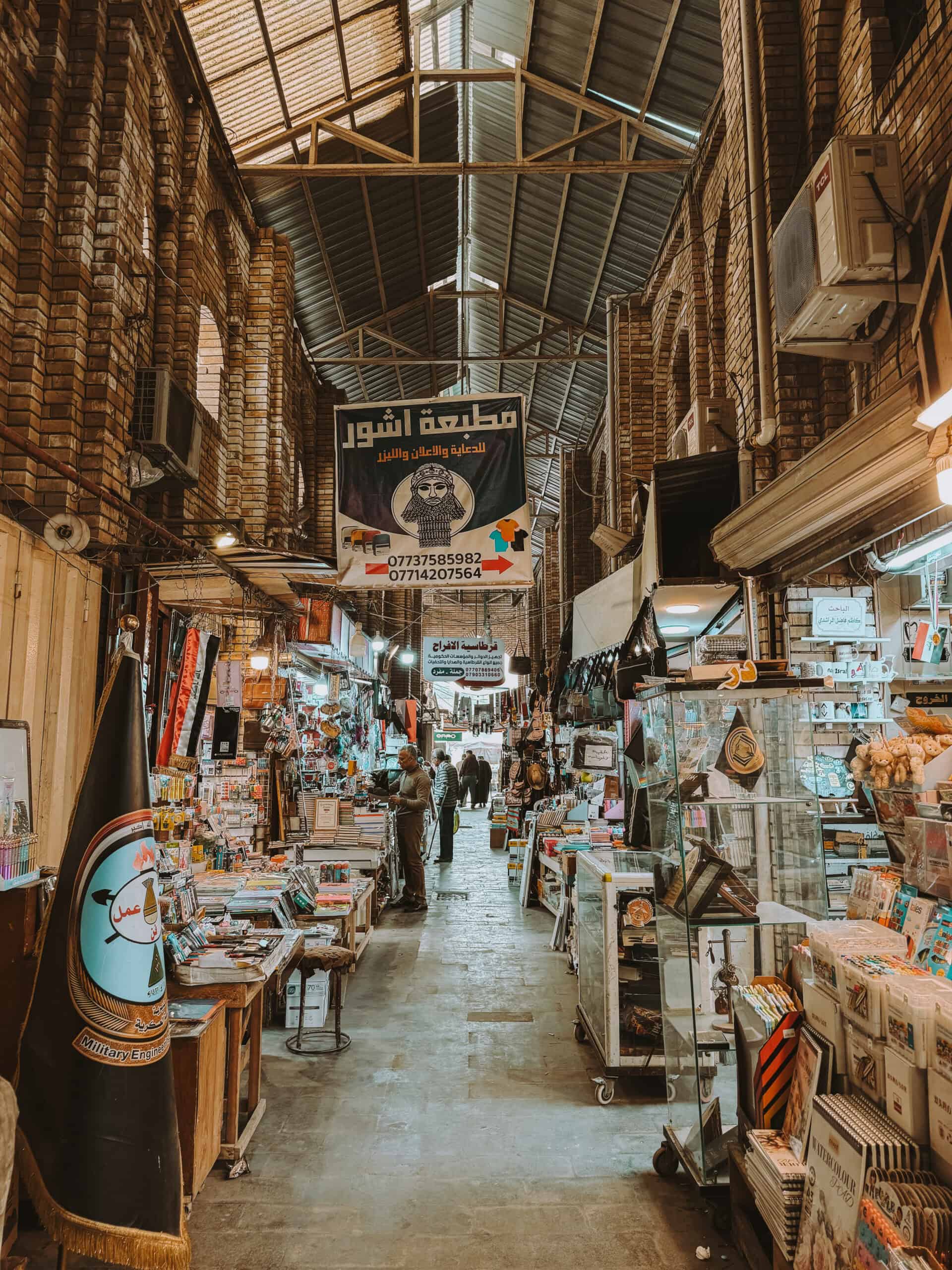
📍Al-Rashid Street: Originally built in 1916, Al-Rashid Street is like Baghdad’s version of the Champs-Élysées but more worn and with more soul. It was named after the Abbasid caliph Harun al-Rashid. Today, this street is lined with arched arcades, old cinemas, mosques, and cafes.
💡 Bonus tip: If you want to cruise down the Tigris River, the dock for cruises is next to Mutanabi Street.
If you want a deeper dive on Baghdad, I wrote a full guide with even more stops, photos, and tips — 10 Incredible Things to Do in Baghdad.
Overnight in Baghdad.
Day 3: Day trip to Babylon & Saddam’s Palace
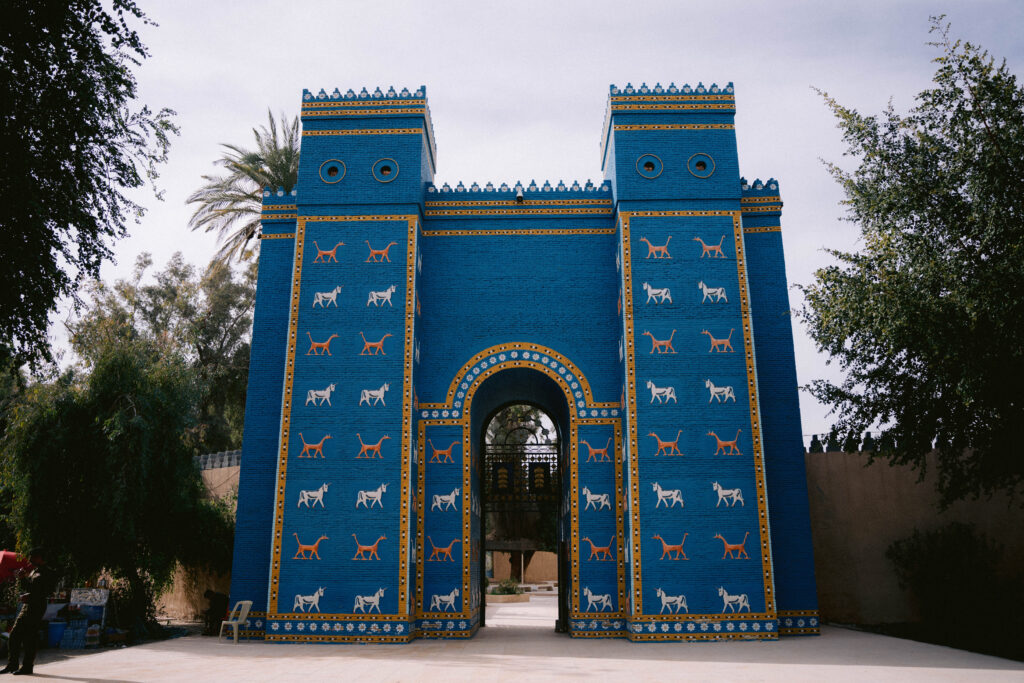
After breakfast at the hotel, drive about an hour to the legendary ruins of Babylon.
It is surreal to visit Babylon. On the one hand, the archeological ruins are eerily quiet—you might be one of a handful of visitors there (the only other visitors might be locals)—so it’s easy to take it all in. In contrast, a site like this in Egypt would be filled with tourists and vendors!
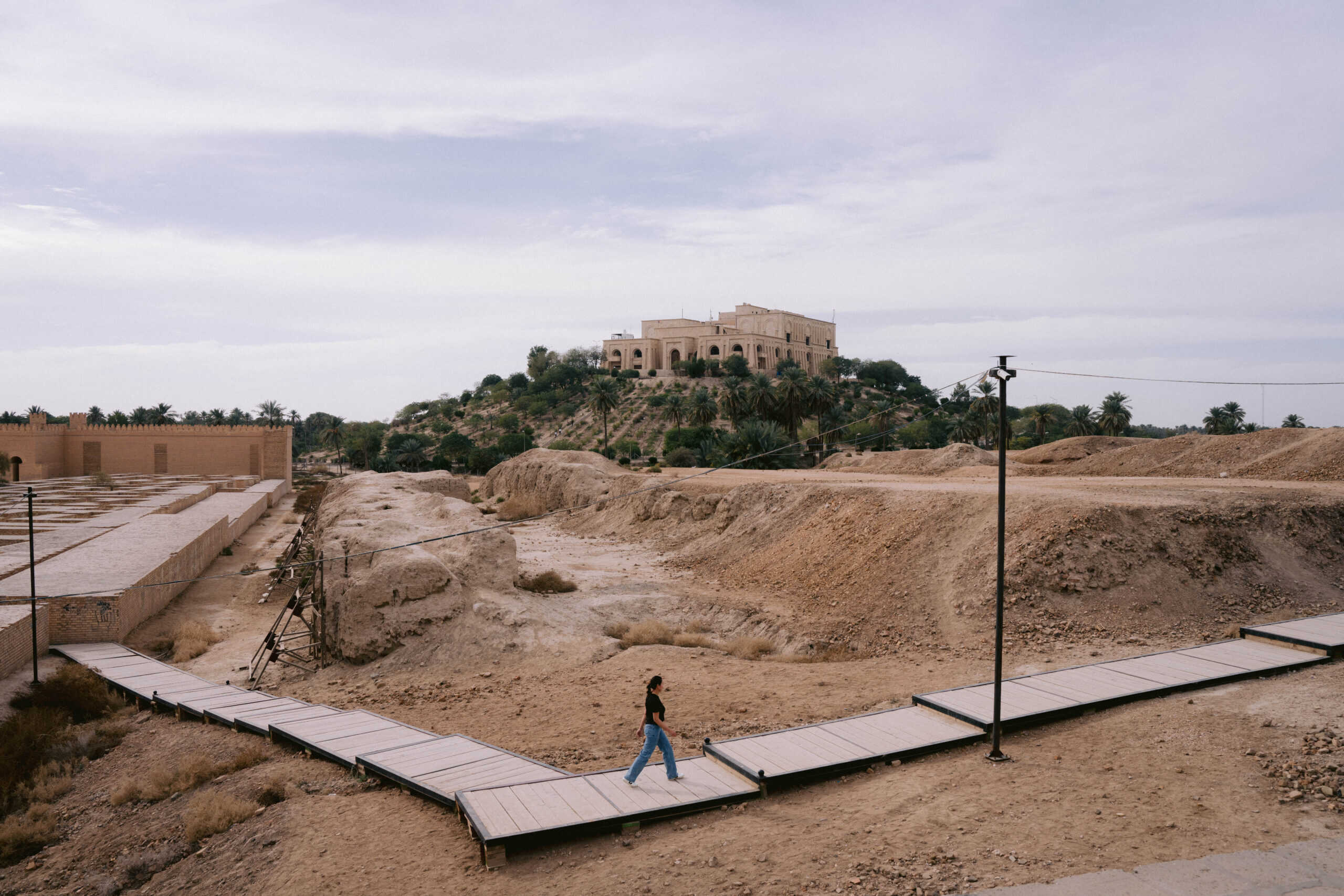
On the other hand, it’s a bit odd walking through Babylon knowing some of the architecturally impressive parts of it are either reconstructions (Saddam had a penchant for reconstructing historic sites to his whims, regardless of whether it was true to the original construction) or can only be seen in museums in other countries (ahem, yeah, it was stolen). The original blue Ishtar gate, for instance, is sitting in the Pergamon Museum in Berlin, Germany.
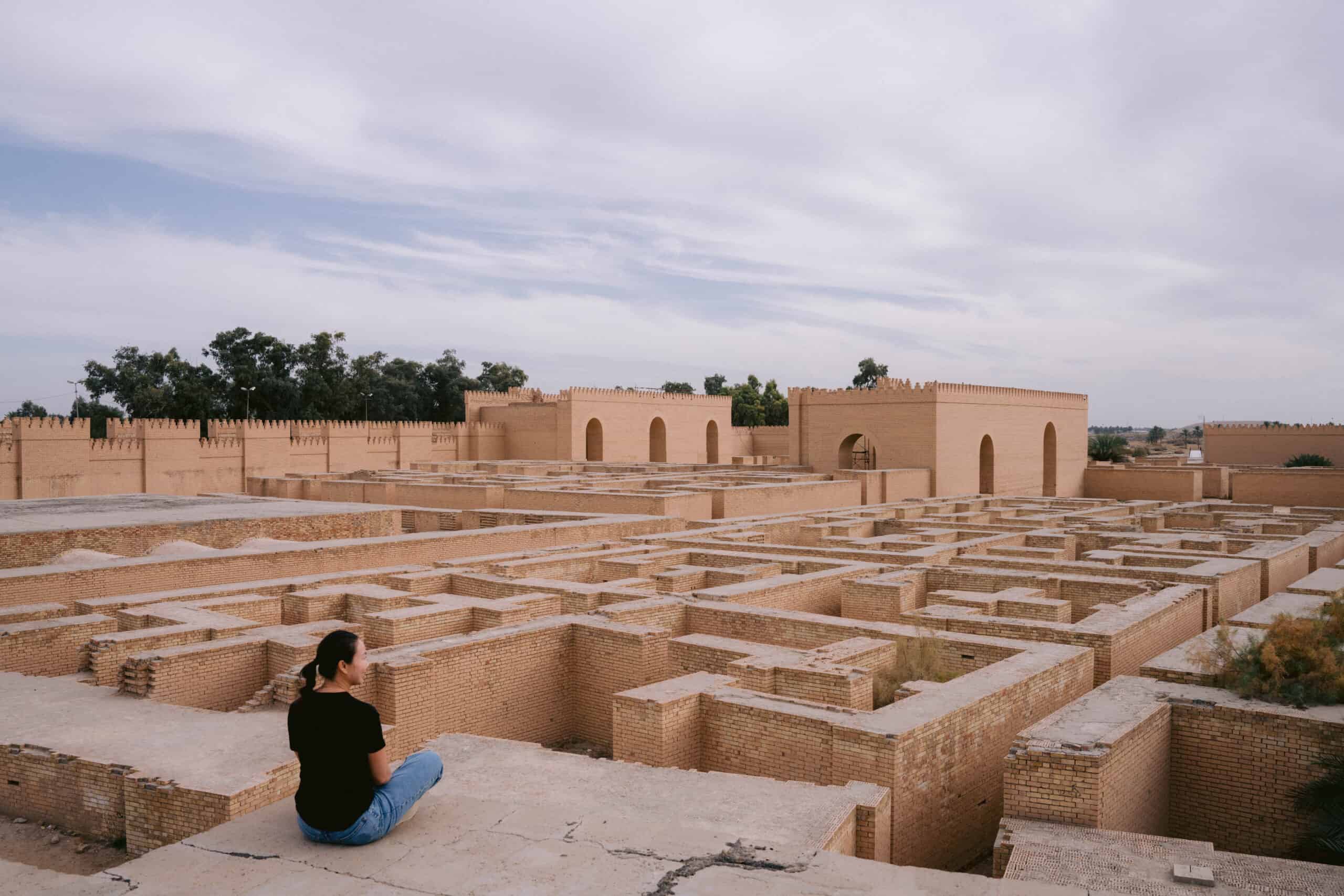
I also felt mixed emotions of awe and disgust walking through. Firstly, I learned about Babylon in school as the cradle of civilization. Then while I’m awestruck standing there, I learned U.S. troops based themselves here and drove tanks over its ruins. The cultural and historical vandalism, y’all. I can’t deal with it sometimes.
🔎 What to look for in Babylon:
Once you’ve had your fix of Babylon, head to Saddam’s Palace nearby.
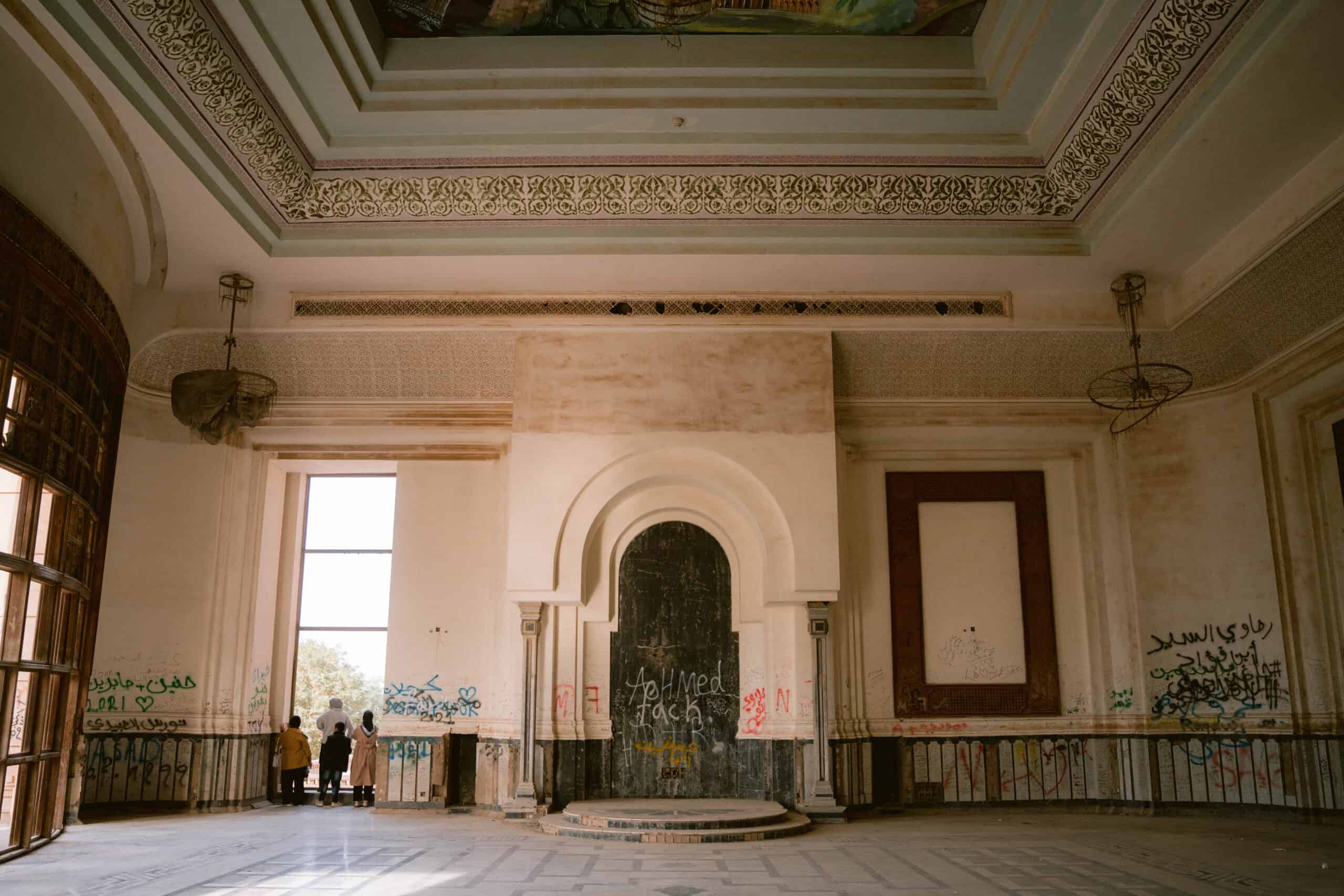
Walking through his summer palace, it’s wild to think how lavishly he once lived and how larger than life he must have been. You can see the grandeur of the entryway, Saddam’s throne (or where it would have been), the panoramic views he had, and where his kitchen and bedrooms were.
Today, however, the palace, while standing, has signs of abandon—graffiti on walls, trash, and even the scent of urine in random corners of the palace. Oh, the U.S. also stationed its troops in the palace during the Iraq War… so you can see how it was basically uncared for.
🤯 Fun Fact: Saddam had palaces all over the country. He never even lived in this one.
While visiting, I kept thinking how this palace could be given a second life by turning it into a museum, but alas, developing tourism is not a priority for the current government.
Overnight in Baghdad.
Day 4: Depart Baghdad for Karbala and Najaf
It’s time to head towards the South of Iraq, but first, stop at the Iraq Museum in Baghdad.

The Iraq Museum is home to one of the richest collections of Mesopotamian artifacts in the world, covering over 7,000 years of history. There are treasures from the Sumerian, Akkadian, Babylonian, and Assyrian civilizations—civilizations that laid the groundwork for writing, law, and urban life. Give yourself 1-2 hours to see it.
Then drive 1.5–2 hours south to Karbala, one of the holiest cities in Shia Islam.
You’ll have time to visit the holiest shrine in Karbala, the Imam Hussein Shrine. Imam Hussein was the grandson of the Prophet Muhammad.
Whether or not you’re muslim, let me just say that Iraq’s shrines are no joke. They are architecturally stunning and gilded—you will be blown away by the detail and the air of reverence inside. You want to see this shrine.
Next, check out Al-Abbas Shrine nearby and the souks around the shrines.
💡Bonus tip: It’s important to dress like the locals when you’re in Karbala and Najaf—these cities are conservative and holy.
Women should wear an abaya and a headscarf.
Men should make sure your shoulders and knees are covered. You’ll feel less out of place in a long sleeve shirt and long pants.
Overnight in Najaf, which is about an hour away.
Day 5: Visit the Imam Ali Holy Shrine, Wadi al-Salam Cemetery, and the Ziggurat of Ur
In the morning, head to the Imam Ali Holy Shrine. This shrine is the burial site of Ali ibn Abi Talib, the cousin and son-in-law of Prophet Muhammad and the first Imam in Shia Islam.
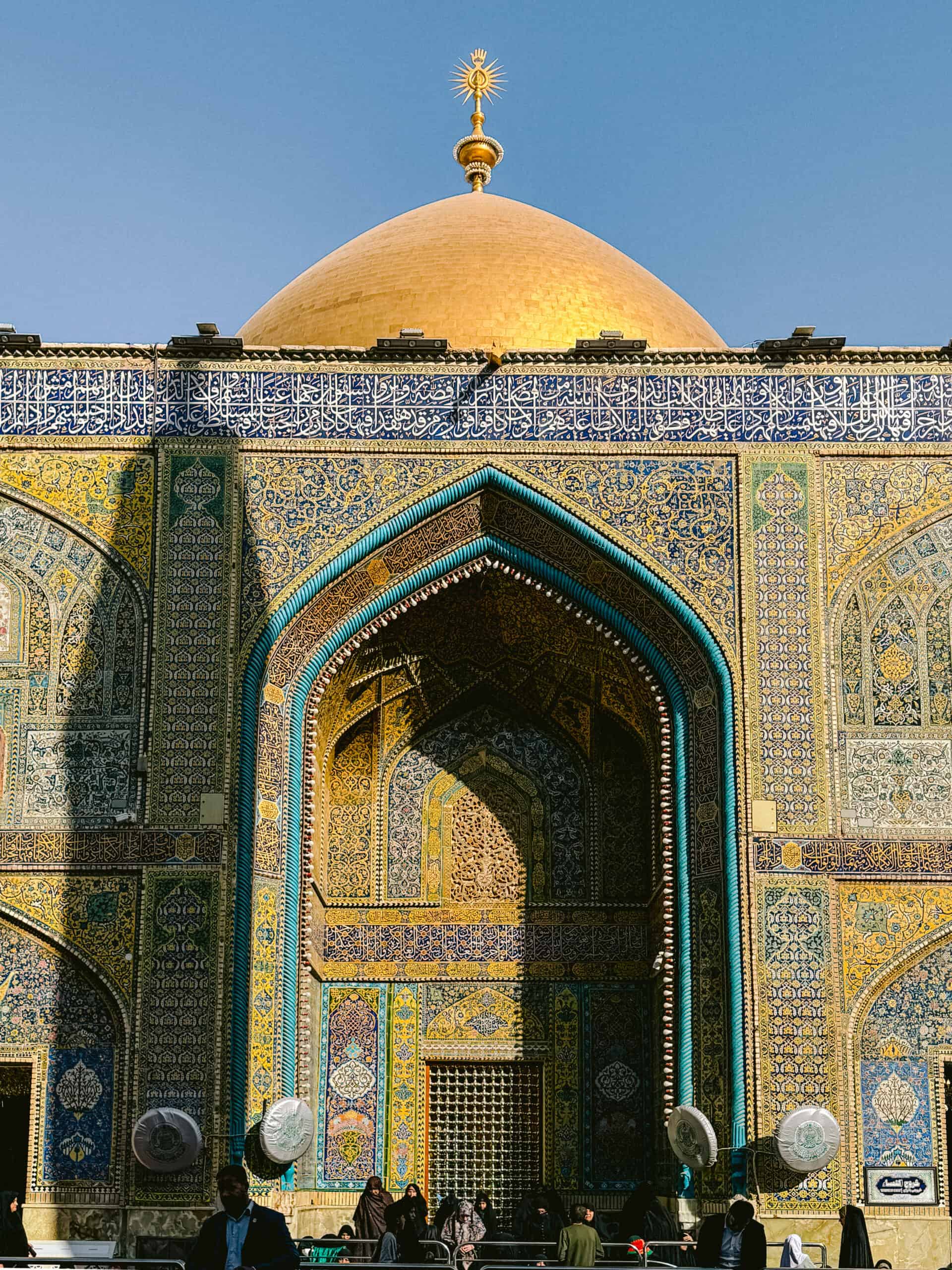
With its golden dome, towering minarets, and intricate tile work, it’s one of the most sacred places for Shia Muslims and it attract millions of pilgrims each year.

The shrine complex also houses schools, libraries, and a vast courtyard that buzzes with prayer, reflection, and reverence—day and night. As a visitor, you can admire the architecture and feel the spiritual atmosphere.
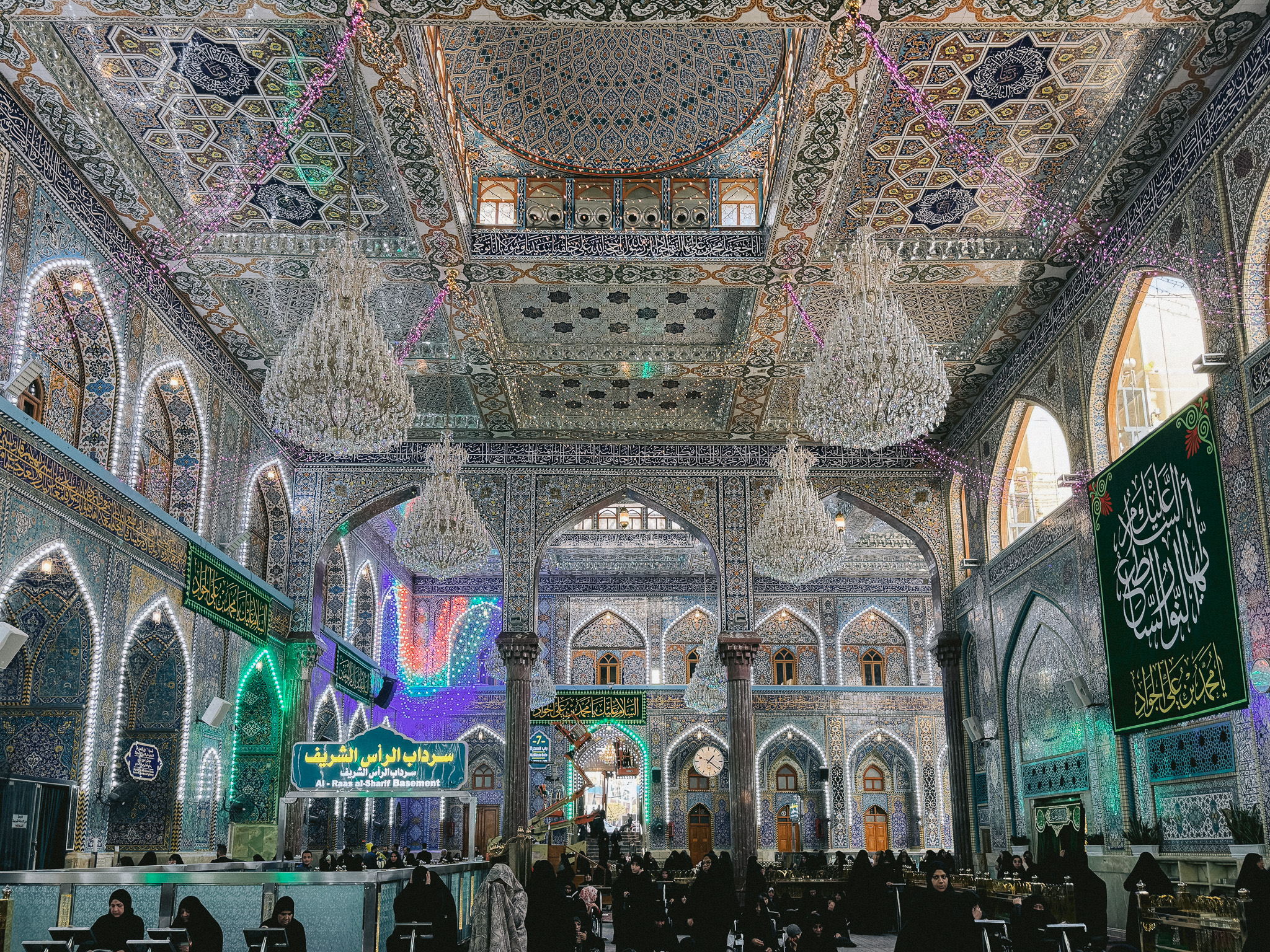
Have lunch in Najaf and then stop at the world’s largest cemetery, Wadi al-Salam Cemetery. This cemetery houses five million graves of Shia Muslims who believe being buried near Imam Ali brings them closer to paradise.
Wadi al-Salam Cemetary was also the site of combat between U.S. troops and locals in 2004. The U.S. lost that battle but not before destroying parts of the cemetery. I, sadly, saw bullet holes on many tombs and gravestones, another reminder of Iraq’s recent past.
In the afternoon, drive 3 hours south to the Ziggurat of Ur.
The Ziggurat of Ur is a 4,000 year old step pyramid and one of the best-preserved in Mesopotamia. In the 1980s, Saddam Hussein ordered a partial reconstruction of the facade and staircase which is why it looks so intact today.
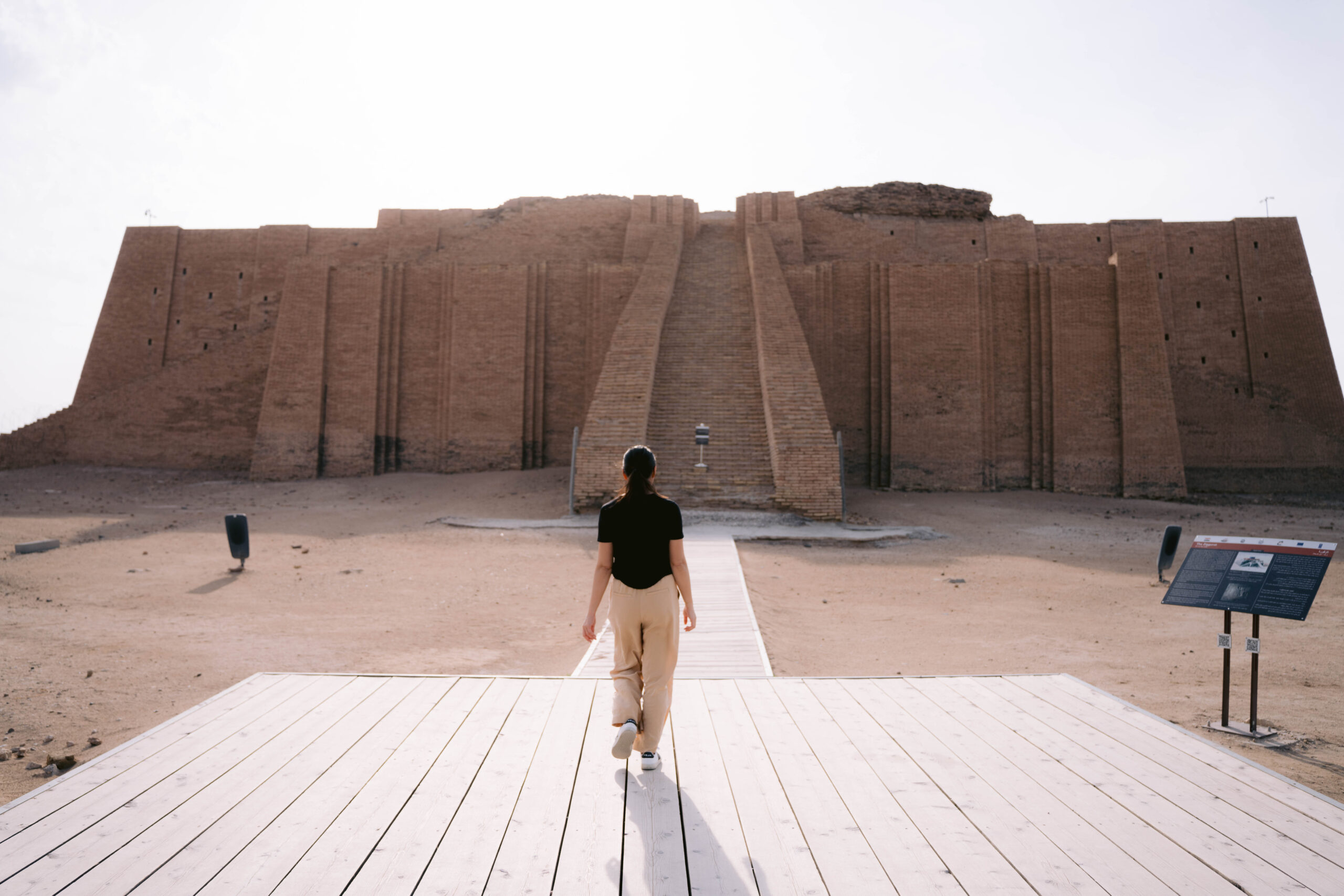
The Ziggurat is in the middle of nowhere and you’ll likely be the only person there. You can’t climb it anymore either which is a shame since the views from the top are good. Still, it’s worth checking out. Nearby, there are also ruins of the first arch in the world as well as Abraham’s house.
Overnight in Nasiriyah.
Day 6: Visit the Iraqi Marshes
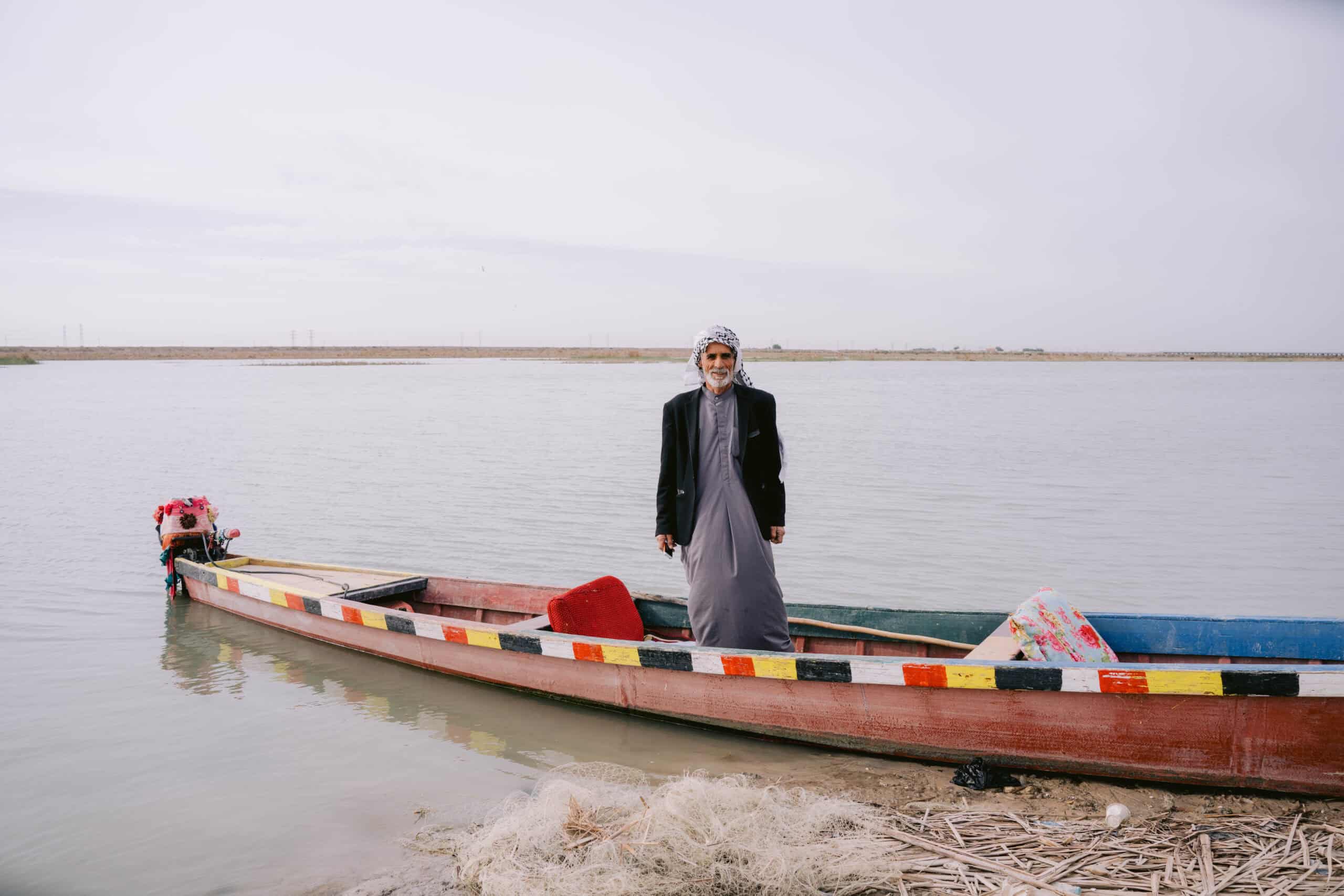
Head to the Mesopotamian Marshes, where you can take a canoe ride through a living piece of ancient history. The Marsh Arabs—descendants of the Sumerians—still live here in reed houses, herd water buffalo, and paddle through narrow channels as they’ve done for generations.
💡 There are different canoe tours here, which are all arranged with locals. The simplest ones take visitors in canoes down the marsh for a fixed time while longer tours may include a stop along the way and/or lunch. It is also possible to spend the night in one of the reed houses with a local family.
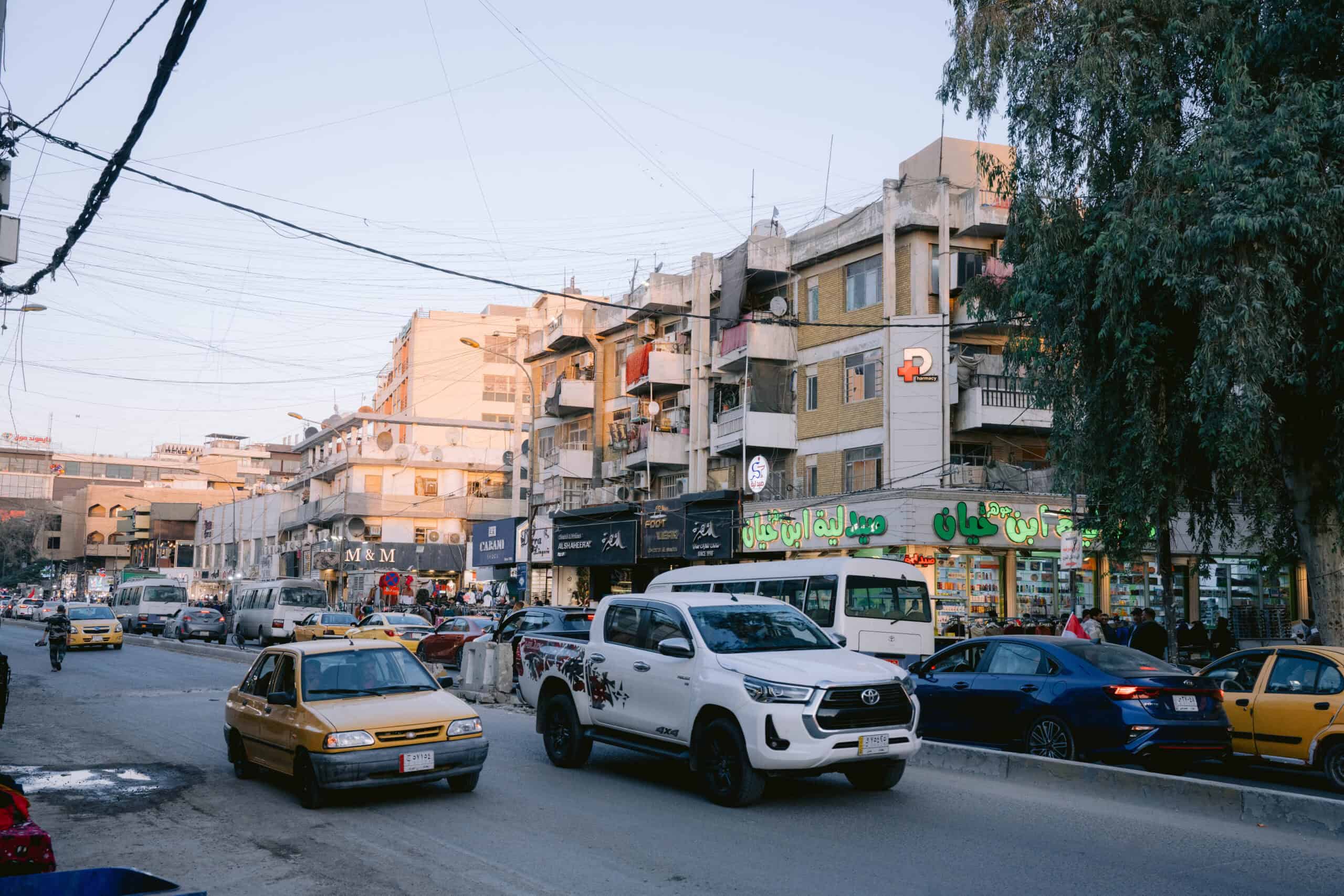
When you’re ready, make the 5 hour drive back to Baghdad. You can spend the evening watching the streets of Baghdad come alive.
Overnight in Baghdad.
Day 7: Visit the old mosques in Samarra and the ancient ruins of Hatra
Today, head north into former ISIS territory (don’t worry—it’s totally safe now). Watch as the landscape shifts from dusty plains to lush green hills. You’ll pass small mounds along the way—ancient ruins waiting to be excavated.
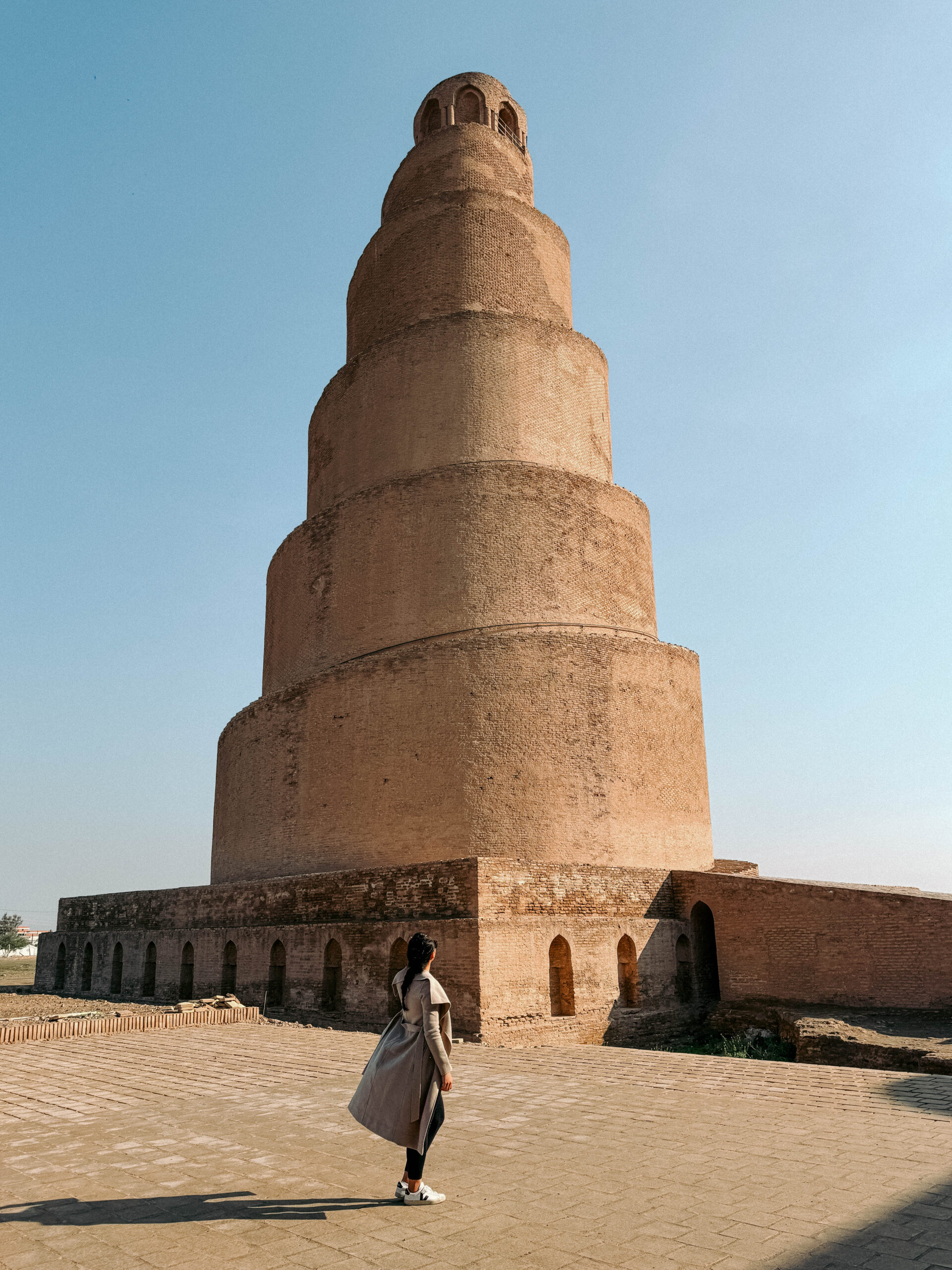
Stop at Samarra, once the capital of the Abbasid Caliphate during the 9th century. The star attraction in Samarra is its Great Mosque and spiraling minaret (Malwiya). I’ve been to a lot of mosques on my travels, but I’ve never seen a spiraling minaret until I went to Samarra!
The minaret was under renovation when I visited but normally visitors can climb to the top.
Since I couldn’t climb to the top, I also visited another mosque nearby which is totally worth checking out.
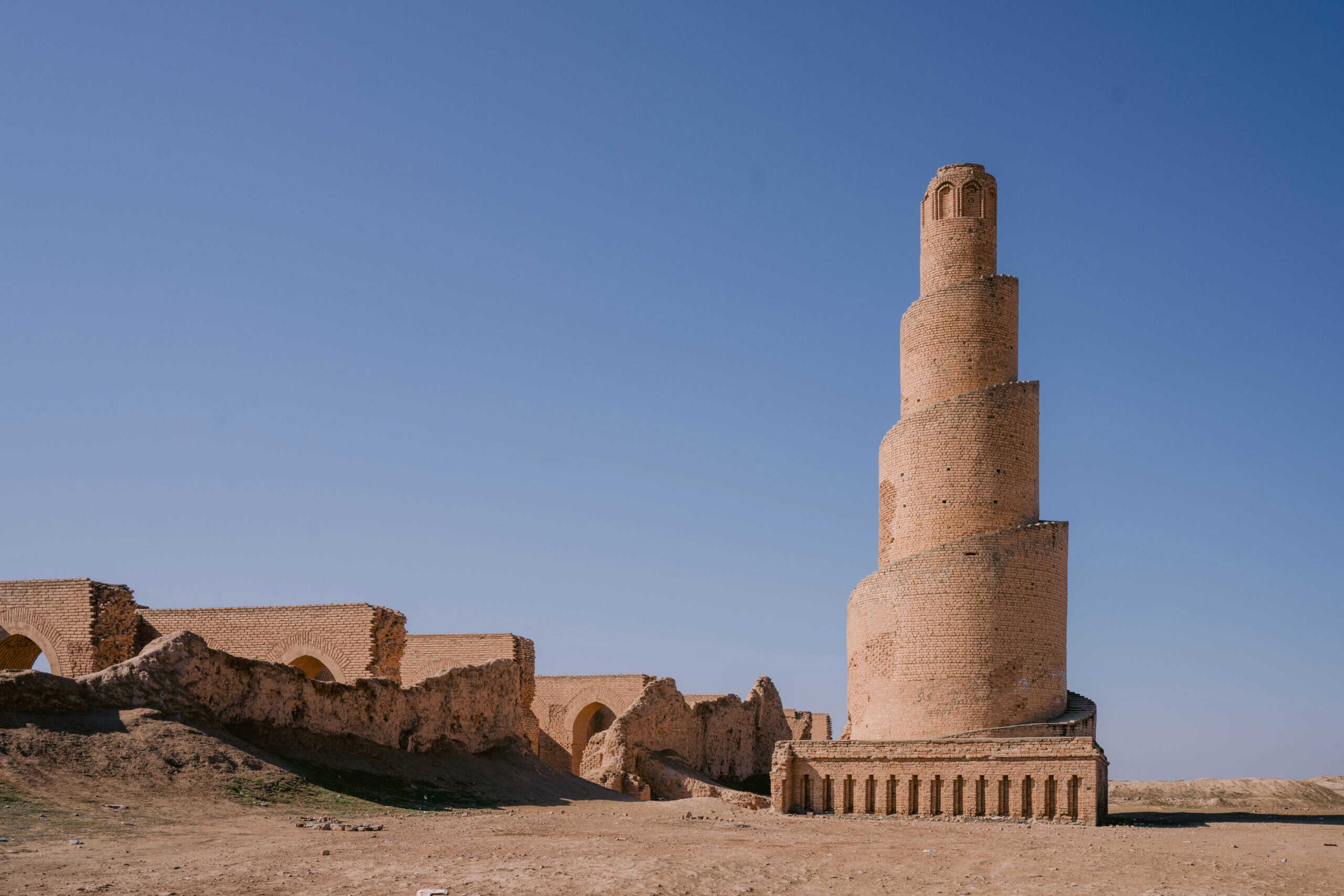
The Abu Dulaf Mosque is located a short drive north of Samarra and feels like Malwiya’s forgotten sibling: similar spiral design, same sandy grandeur, and completely tourist free! I took my sweet time wandering around the ruins, almost climbed to the top (I chickened out because the steps get progressively narrower), and explored every nook and cranny of the ruins of the mosque. I might even say I liked the Abu Dulaf Mosque one more than the Great Mosque.
Grab lunch at a rest stop and then make your way to Hatra by late afternoon, where you can explore the Arab ruins during magic hour.
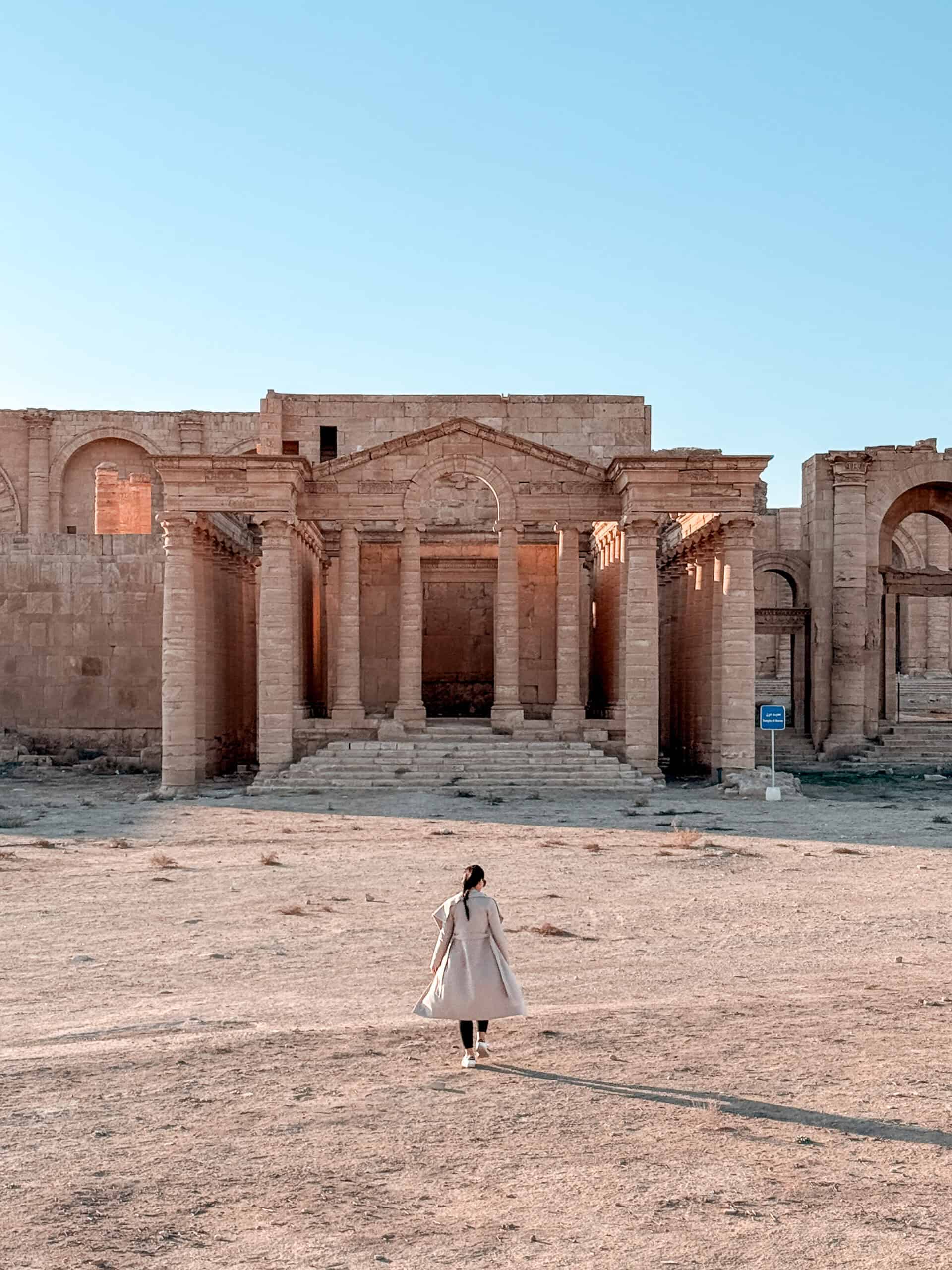
Hatra is an ancient fortified city that was part of the Parthian Empire. It’s located in northern Iraq and dates back to the 2nd or 3rd century BCE. The city was a major religious and trading center, blending Greek, Roman, Mesopotamian, and Eastern architectural styles.
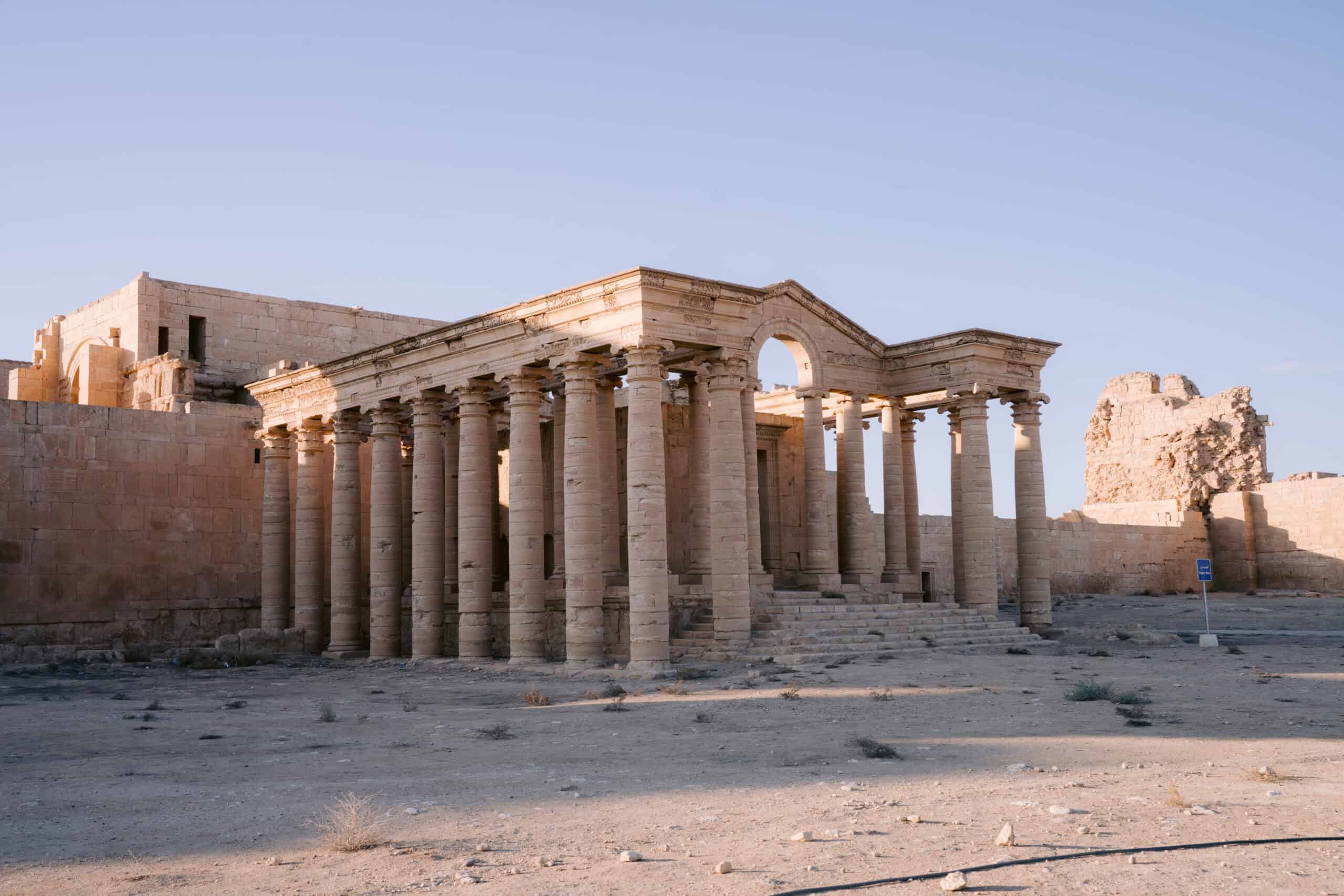
The site is pretty big. It has towering columns, massive temples, and detailed stone carvings. It also has the occasional bullet shell casing—a stark reminder that Hatra recently served as ISIS’s training grounds.
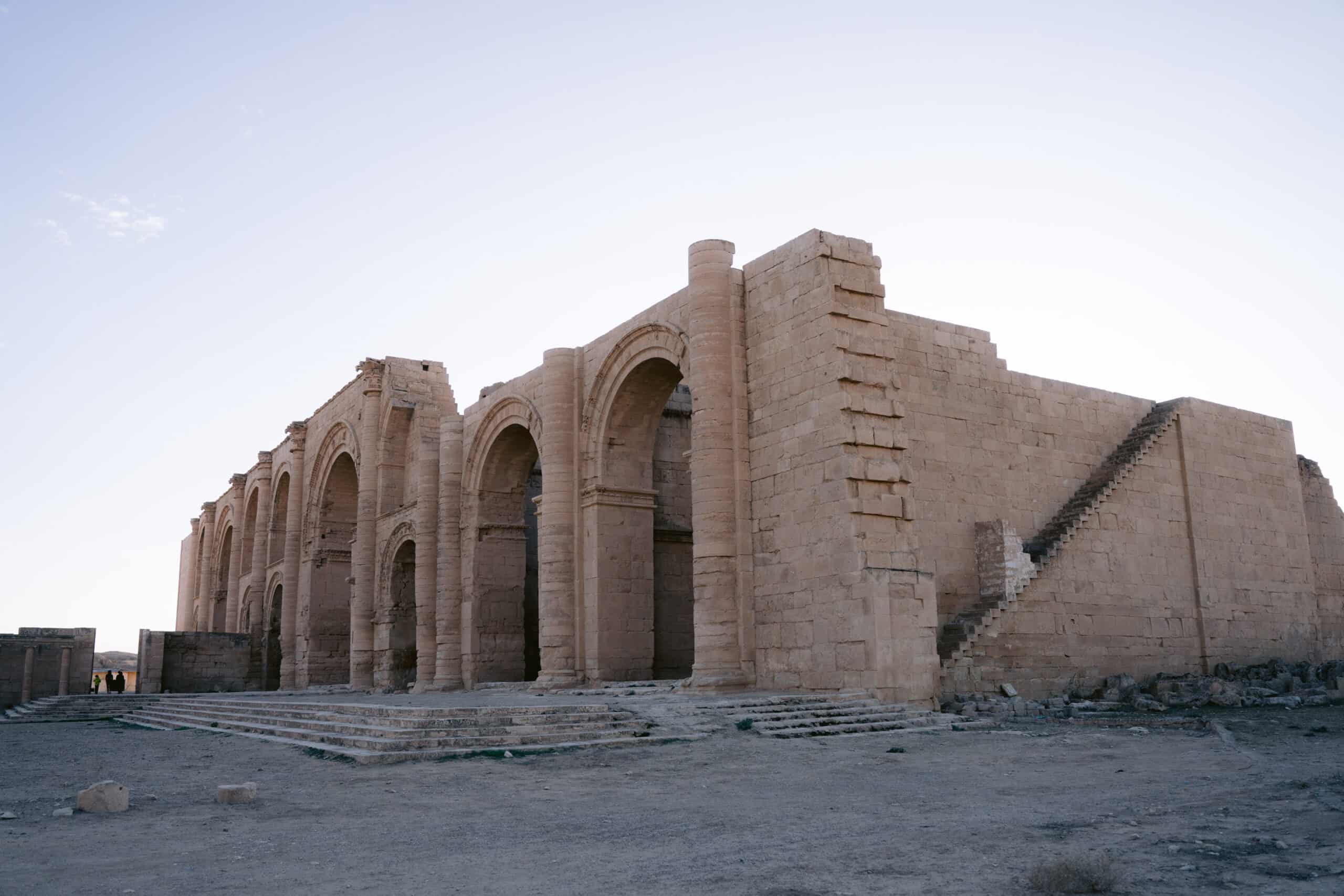
Random bullet casings aside, I loved exploring the ancient ruins. The only other tourists here were locals, who were all surprised to see a foreigner. As a result, I spent a good amount of time posing for photos with them. I guess that is all part of the Iraq tourist experience!
Overnight in Mosul.
Day 8: Walk through Mosul’s old city before heading to Kurdistan Iraq
Mosul was once ISIS’s stronghold, and traces of war are still visible. That said, the city has undergone a lot of renovation. I was surprised to see pretty lights greeting me as I entered the city.
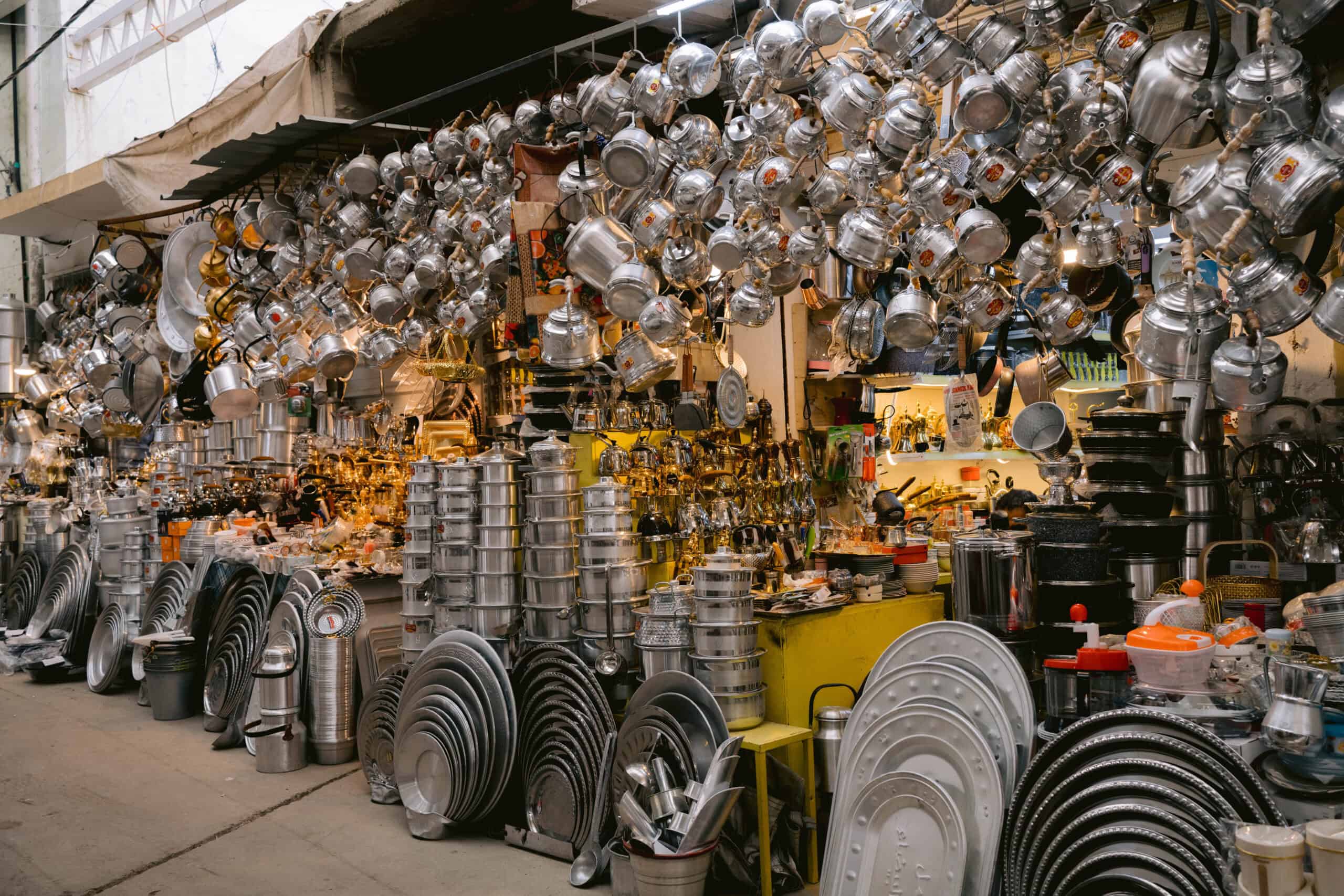
This morning, explore Mosul’s old city to check out its busy souk. The souk is full of vendors selling everything from colorful textiles, spices and herbs, copperware, sweets, and artisan-made crafts.

Next to the souk, there is a fish market worth wandering. Iraqis eat mostly carp (that might be one of the only fish they can source from their rivers) so you’ll find a lot of fresh carp as well as vendors grilling the carp to make Iraq’s national dish: Masgouf.
After walking to the end of the fish market, there is a section that looks like a nondescript small parking lot. Walk through that and witness the destruction left after years of ISIS fighting in Mosul.
It is a sobering walk for sure. This part of the city looked like it was inhabited with wealthy families (their homes had many rooms and were located in what I assume to be a prime location in town near the market) but all of it was utterly destroyed.
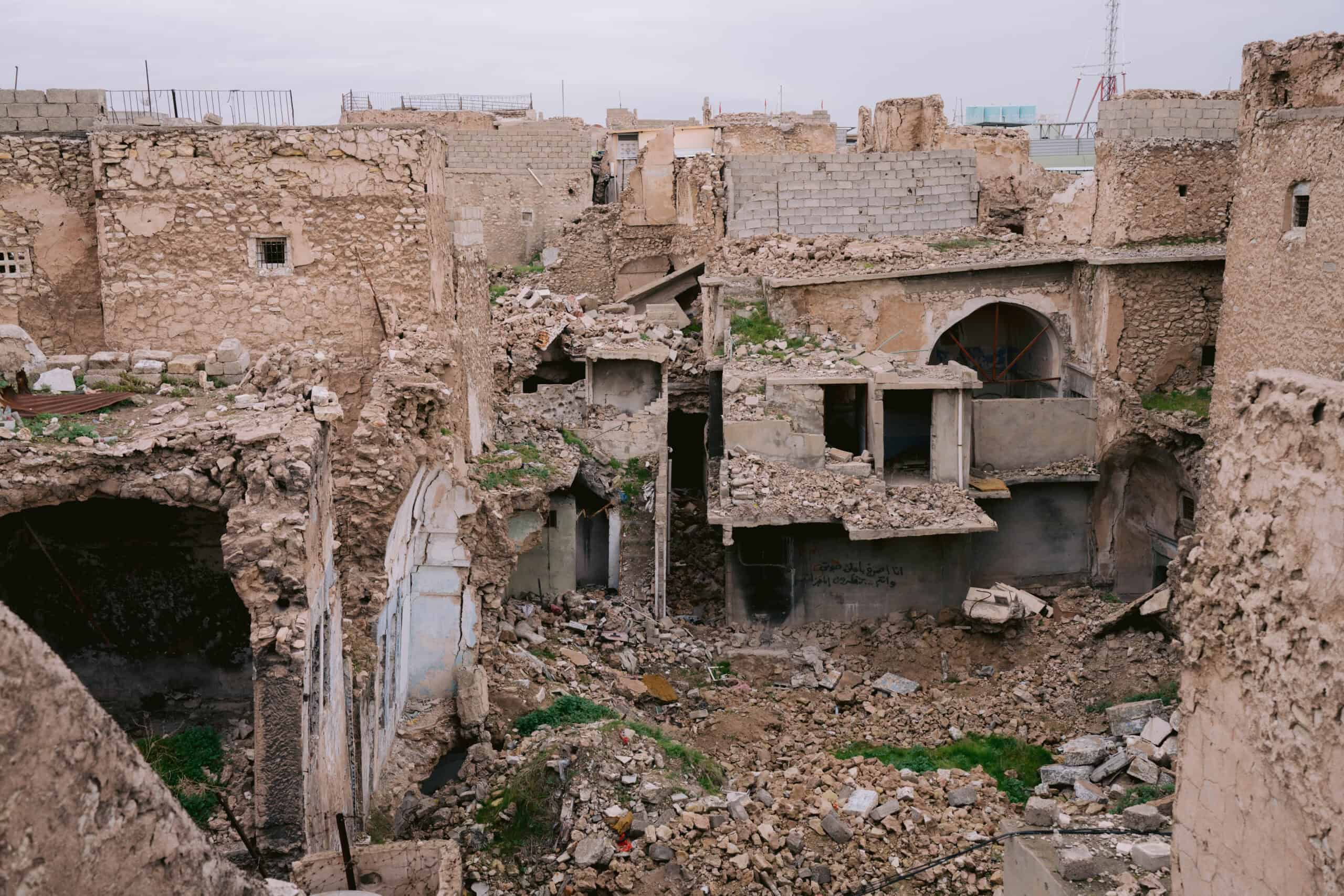
Next, leave Mosul in the late morning and enter Kurdistan Iraq. You’ll have to go through entry formalities just like at any border crossing.
Stop in Alqosh, a small Christian village, for lunch. If you’re lucky, find someone to speak Aramaic (the language Jesus spoke) to you — Aramaic is still used locally here!
Next, make your way to Rabban Monastery and Lalish temple, while admiring all the sheep grazing the hills nearby. Rabban Monastery is carved into the mountainside. I wish I saw it, but it was closed the day I went.
I did, however, go to Lalish which is the holiest site of the Yazidi religion. Visitors can visit the sacred temple. It’s small and you have to make sure you’re barefoot to enter, but it offers a glimpse into this spiritual center of the Yazidi religion.
Overnight in Erbil.
Day 9: Visit Akre, then check out Erbil
Start the day with a side trip to Akre, one of the most picturesque mountain towns in Iraq. It’s perched on a hillside with tiny homes against dramatic mountain cliffs. It’s been home to a mix of Kurdish, Jewish, Assyrian, and Arab communities throughout history.
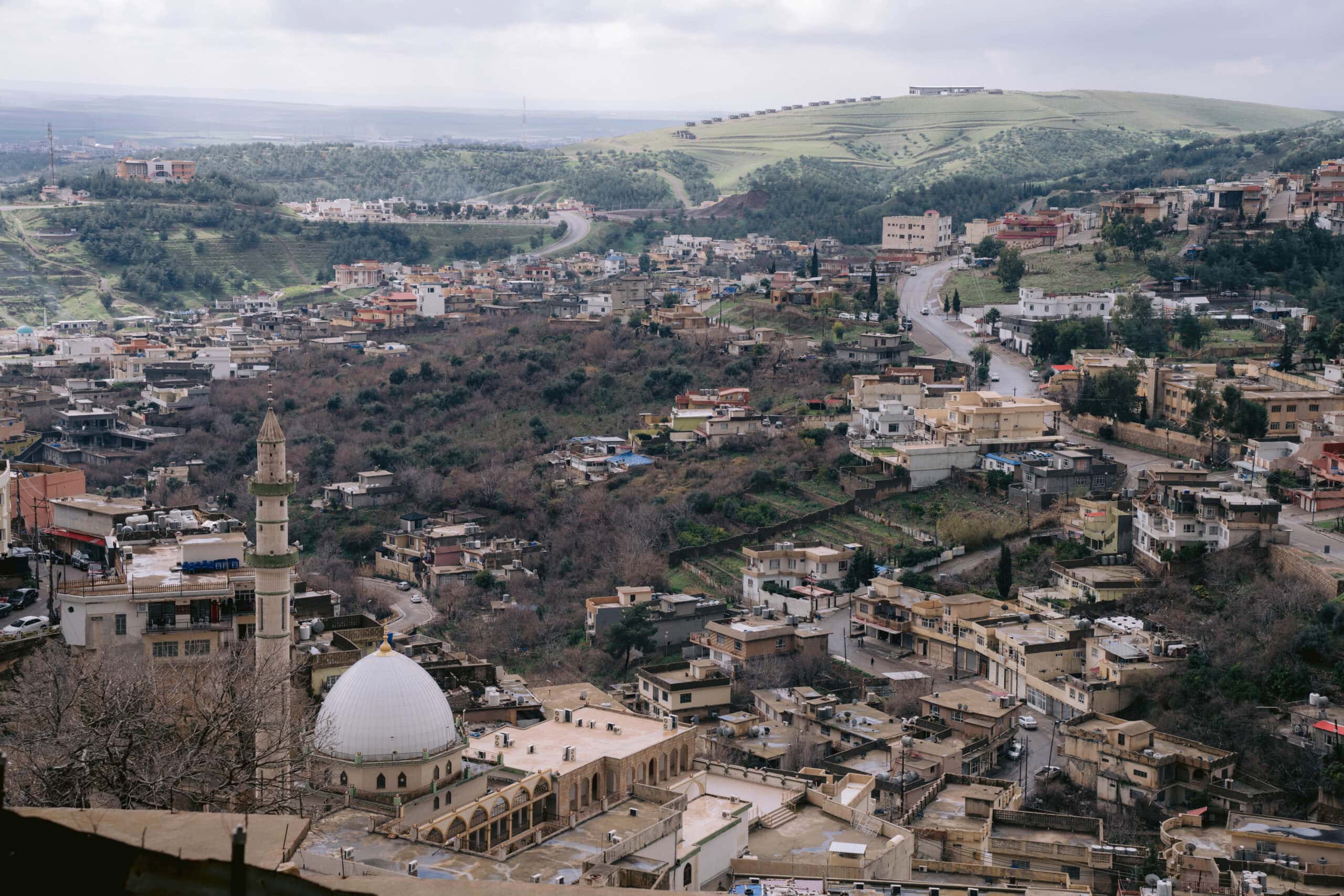
The streets are small, but it’s worth walking around and stopping for tea to admire the mountain views. Then, hike up the mountain to find the castle at the top. Admittedly, the castle leaves a bit to be desired (I had to text a photo of it to my guide to make sure I found it — that’s how much it doesn’t look like a castle), but the views from the top are worth the 45 min hike to get to it.
Return to Erbil and check out the capital of Kurdistan Iraq for the rest of the day.
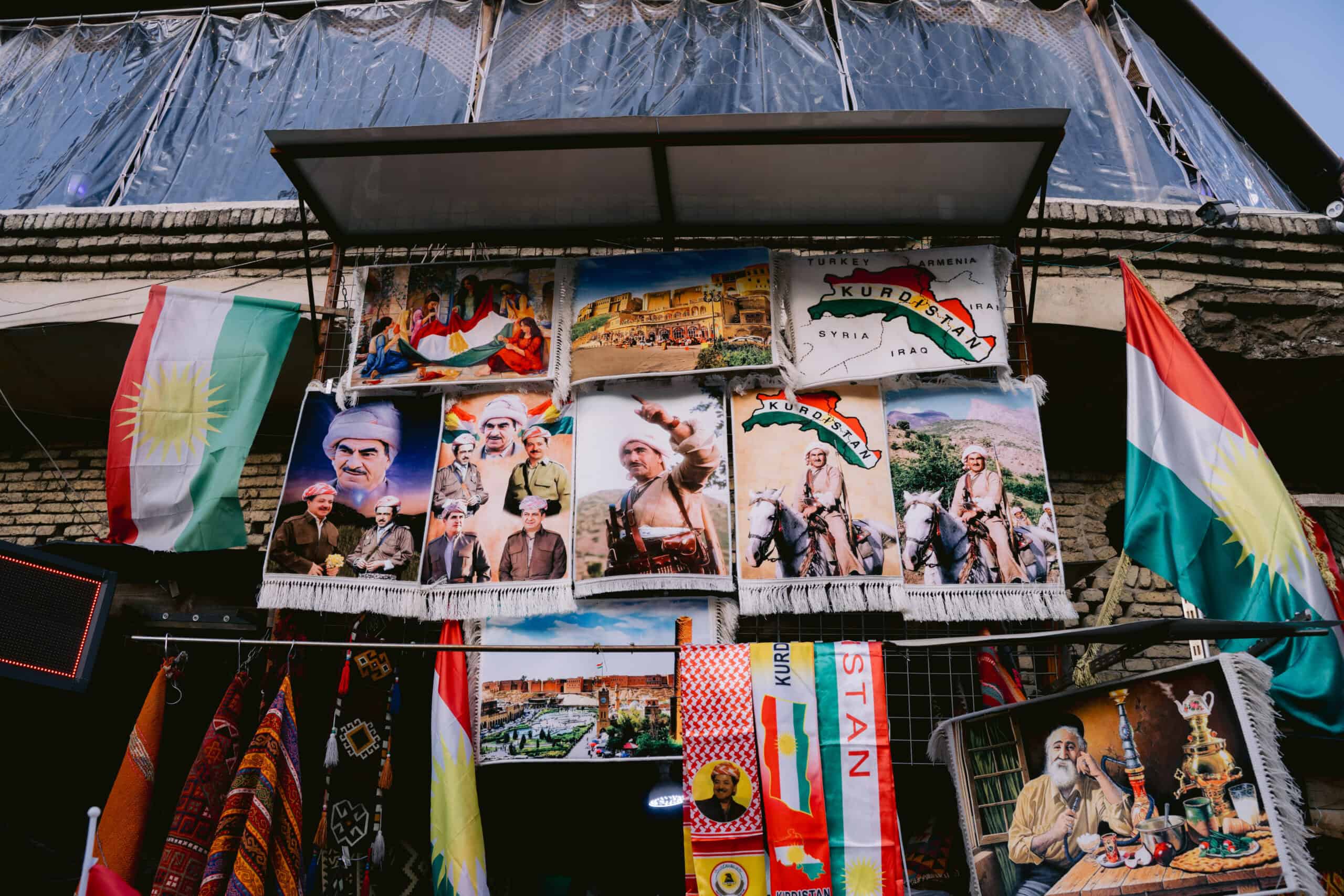
Erbil is 100% worth the hype. It is one of the oldest continuously inhabited cities in the world and blends old and new together effortlessly.
The most recognizable landmark in Erbil is the citadel, which sits atop an archeological mound with commanding views all over the city. When I went, it was closed for renovation so I couldn’t walk through the citadel, but if it’s open, it is a must-do.

Below the citadel, there’s a sprawling plaza with fountains, vendors selling everything imaginable under the sun, and the Qaysari Bazaar where you’ll find spices, sweets, gold, and cafes. It’s a great place to people watch as well.
If you have time, visit the Sami Abdulrahman Park and the Kurdish Textile Museum as well.
Overnight in Erbil.
Day 10: Departure
Most people fly out of Erbil, which I didn’t know when I booked my ticket. Instead, I had to drive 5–6 hours back to Baghdad to catch my flight. Don’t be like me—save yourself the time and book a flight out of Erbil if you can.
What It’s Actually Like to Travel in Iraq
Many people wonder what it’s like to visit Iraq, especially as a female and an American. So let me ease your nerves: Iraqi people are incredibly kind, y’all. They’re excited to see foreigners. There’s no vendor harassment, no tourist traps, no one inflating prices just because you’re not local. It’s… honestly refreshing!

Everyone was so excited to see me, they often asked for photos. It was not unusual to stop for photos a few times a day. If you’re not into feeling like a celebrity when you travel, don’t worry, they ask for your permission first before they take photos. They aren’t sneaking pics. In short, they are respectful.
That said, logistically, Iraq is not like traveling through Europe. You won’t hop on a train between cities. Site hours are unpredictable. And the country isn’t exactly rolling out a red carpet for tourism. If something’s closed for renovation, it might stay that way for years. But the realness of Iraq is that makes it special.
Iraq is perfect for:
If that’s you, this is your sign to book that ticket to Iraq!
Everything You Need to Know To Visit Iraq: When to Visit, Visas, Budget, and more
If you want to visit Iraq, here is the practical information to help you plan your trip.
October to April is ideal. Outside those months, temps soar well above 100°F and there’s not much shade at the major sites. Even locals avoid the sun in summer.
Probably. Visa policies cary depending on your nationality. I explain everything about visas in this post.
You can and people do. If you are experienced traveling in the Middle East independently, aren’t time-constrained, and can speak Arabic, then independent travel is possible.
That said, for most people I do not recommend it. There are many military checkpoints, the transportation options aren’t efficient, and the opening hours of sites and attractions can change on a whim. Tours make the experience easier, safer, and more efficient—especially if you’re short on time.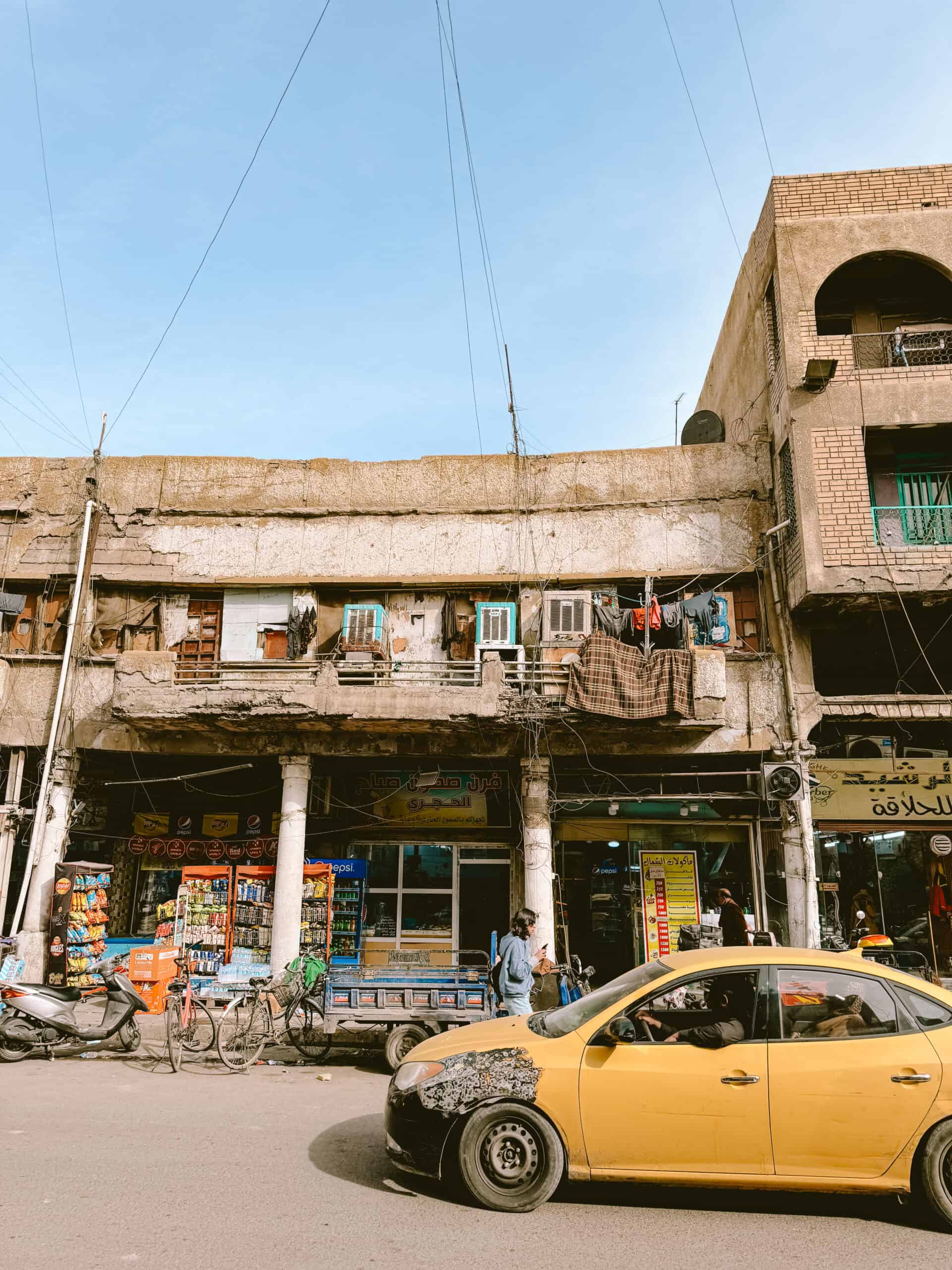
If you’re short on time, it’s still worth going to Iraq. Here are a few options you could consider if you’re limited on time:
3 days: Baghdad & Babylon, or just explore Kurdistan (Erbil, Akre, Lalish)
5 days: See Baghdad, Babylon, Samarra, and Hatra
6 days: See Karbala, Najaf, Ziggurat of Ur, and the Iraqi Marshes
The full 10-day route (Baghdad to Erbil) gives the best balance of history, culture, and landscapes.
Guided tours aren’t cheap. Most 7–10 day itineraries run $2,000–$4,000 for a solo traveler. That usually includes transport, guide, and accommodation. The range is wide but I think Iraq tour companies are charging a lot today because travelers are willing to pay it.
Once you’re there, though, you don’t need to budget for much else except food ($1-$15/meal), souvenirs, and incidentals. Get multiple quotes from different tour companies since pricing isn’t standardized.
The Iraqi Dinar. The official exchange rate hovers around 1,300 IQD to 1 USD.
That said, there’s a black market for the Iraqi dinar. When I went, I was able to get 1,500 IQD to 1 USD. Your guide can help you find the blackmarket exchange options which are unadvertised and discreet.
🇮🇶 Ready to Explore Iraq the Easy Way?
Here are some trusted tours to get you started:
🕌 Guided 10-Day Iraq Tour with Hotels & Meals
🚐 15-Day Overland Journey from Basra to Baghdad
👳♂️ Baghdad Tour with Local Guide & Private Driver
🏛️ Babylon Ancient City Highlights Walking Tour
Final Reflection: Why Visiting Iraq Will Change You
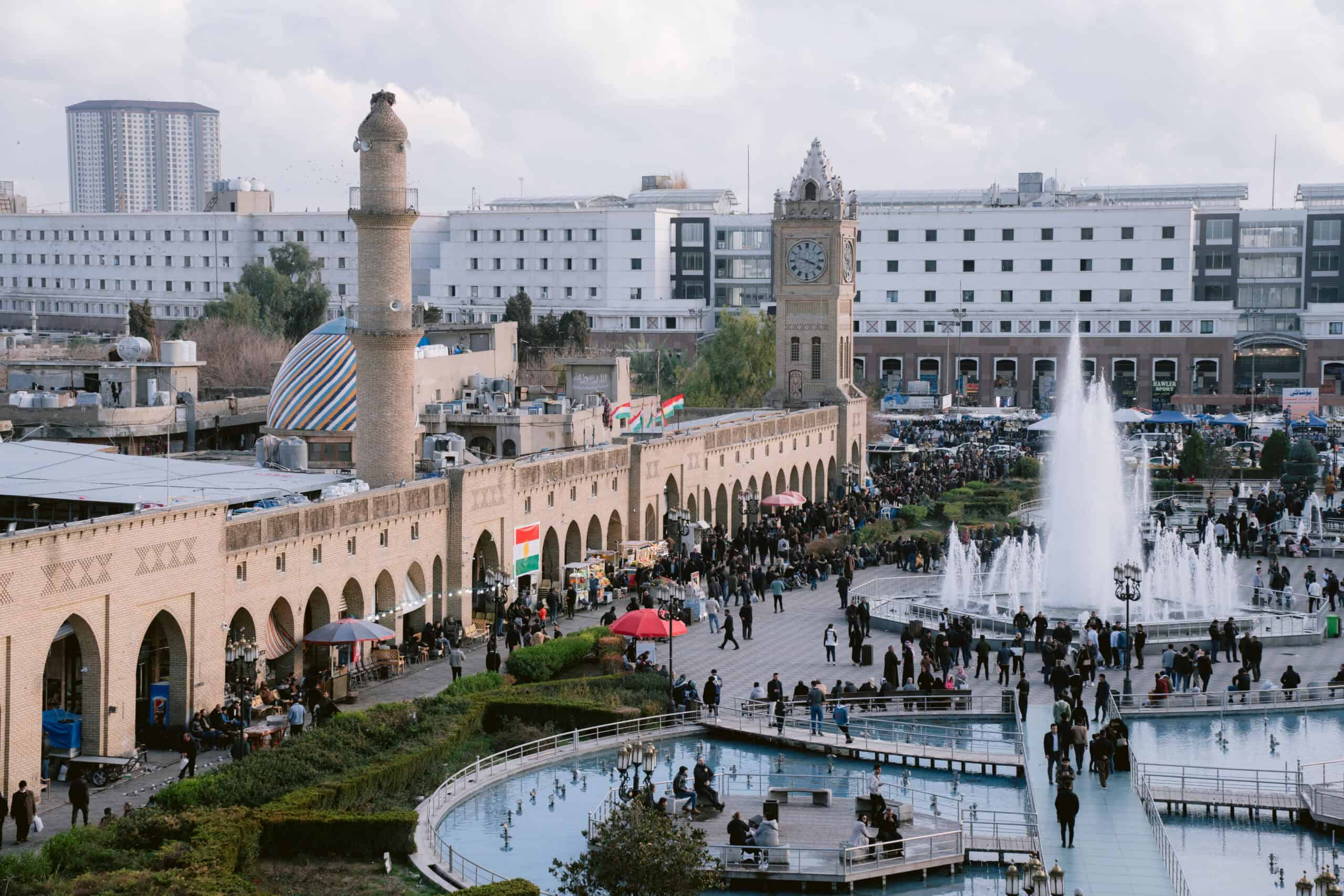
So…why visit Iraq?
Because it will challenge you, change you, and move you.
You don’t travel to Iraq to vacation. You’re going there for perspective and challenge. Iraq confronted the assumptions I didn’t even realize I was carrying and replaced them with something deeper: awe, admiration, and connection. Instead of danger and destruction, I found rich culture, diverse people, and a natural beauty that’s been overlooked for too long.
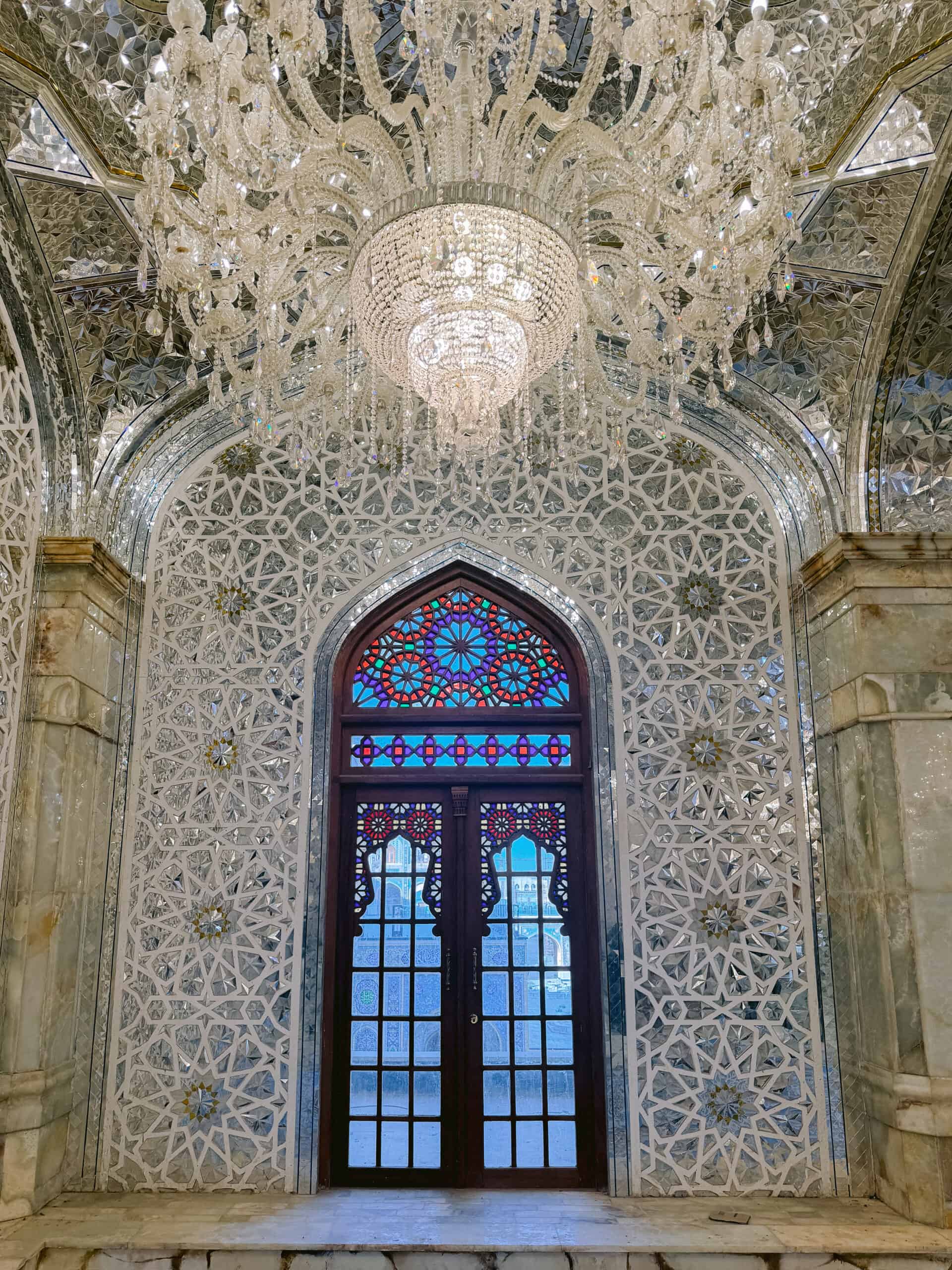
Iraq isn’t the kind of destination that hands you a curated travel experience on a silver platter. But that’s exactly why I loved it. It’s complex, unforgettable, and it’s not pretending to be anything it’s not. It’s the kind of trip that will leave you reflecting on it long after you’ve left.
If you’re looking for a luxury escape or a postcard-perfect trip, Iraq isn’t it. But, if you’re seeking meaning over comfort, if you want to stand in the cradle of civilization and feel it under your feet, Iraq is where you need to be.
Go see the Iraq the world forgot.

